

Sustainability & Reliability
Reliability is recognised as a driving force behind industry expansion, leading to increased profitability and customer loyalty. But, as we continue to expand we must also prioritise Sustainability within our thinking, by adopting cleaner and greener work methods we can ensure a dependable and sustainable future for everyone. This edition focuses on some key aspects; from how reliability can affect productivity and how improvements in performance can be achieved whilst reducing waste and controlling environmental impact.
ERIKS In Action
Supply chain report helps businesses improve their performance and reduce downtime.
The ERIKS ‘MRO Supply Chain Report 2024’ delves into the current approaches of UK businesses towards MRO procurement, supply chain and engineering stores. Page 10.
In Focus
How to pluck energy out of the air.
With rising energy costs have you exhausted all common energy saving tactics? Yes? Well fear not because Festo can help you uncover the savings hiding in your compressed air systems. Page 30.
Debate
Will grid deficiency obstruct electric vehicle adoption?
Is the media reporting on Rishi Sunak’s decision to extend the ban on petrol cars to 2035 a sign of practicality or political manoeuvring? Page 48.
More efficient and foodsafe production. Less need for maintenance.
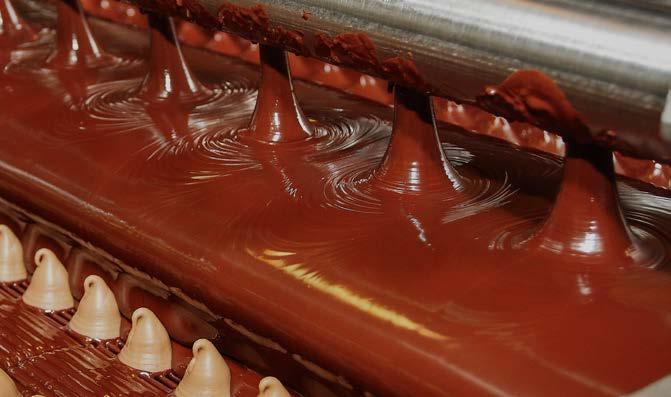
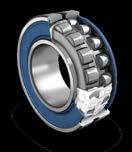

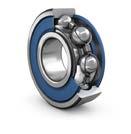
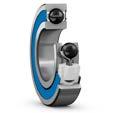
SKF Food line is a specialized range of bearings and bearing units designed explicitly for the unique needs of the food and beverage industry, addressing its critical challenges.
SKF Food line bearings are manufactured to the high standards of SKF Explorer performance class and ensure exceptional durability, strength, and reliability. With a design focused on containing grease and preventing contaminants, they are equipped with food-grade seals and grease, improving food safety and reducing maintenance. This makes them ideal for maintaining hygiene, enhancing productivity, and minimizing the environmental impact in food processing environments.

Welcome

As the world navigates economic and environmental change it is imperative that we prioritise enhancing Sustainability and Reliability within our work practices, to help deliver not only efficiency, performance, and longevity but in doing so we can support our environments and the impact we have on them for the years to come.
With this in mind we kick this edition off with ERIKS In Action, and the launch of the ERIKS ‘MRO Supply Chain Report 2024’. A report focusing on MRO Procurement, supply chain and the engineering stores, it’s findings may shock some, yet enlighten others. We then move on to look at the recent £35k upgrade to the ERIKS Hose Technology Centre in Northampton, along with the welcoming of our first cohort of apprentices to our newly designed apprenticeship programme.
I would recommend to you our In Focus section where we discover the Ansell Earth initiative; created with the environment at the forefront, the goal is to reduce environmental impact without compromising protection for people.
Allied to sustainability, the rise in energy costs will have led to many of you exhausting all quick win energy saving tactics, however, by turning your attention towards your compressed air systems Festo can help you to seek more of those quick and simple hidden savings. Furthermore, for those of you facing a financial fight at
the peril of compressed air, listen up! You could reduce your consumption by up to 62% and cut your bills and CO2 emissions accordingly thanks to SMC and their new compressed air management system.
In our Making Industry Work Better section you can hear how SKF have shook the bearing world once again with the launch of their brand-new spherical roller bearing design.
Finally, our popular Debate piece looks at the recent widespread media reporting of Rishi Sunak’s decision to extend the petrol car ban from 2030 to 2035 and raises the question – is it simply relating to practicality? Or is it possibly politically driven?
We always enjoy our reader’s feedback. So, if you would like to comment on the subjects covered, please join the discussion by emailing or tweeting us at @ERIKS_UK.



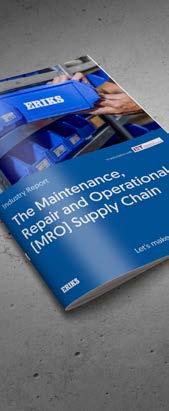



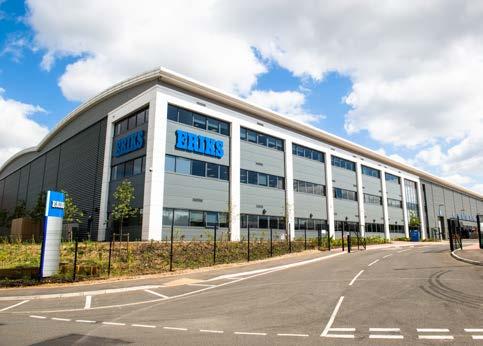

ERIKS and Festo celebrate ‘silver wedding anniversary’
ERIKS and Festo UK & Ireland are celebrating the 25th anniversary of their partnership with a host of activities that will develop the relationship further.
The two businesses started working with each other in the 1990s, firstly at a local level but as Paul Lynch, Chief Commercial Officer for UK & Ireland at ERIKS says, “We wanted to become a national presence in the UK with a pneumatics offering and we wanted that brand to be Festo due to the quality of their products. Festo were looking, for the first time, at what they could achieve by embracing distribution, which wasn’t part of their DNA, and so both businesses took a leap of faith on each other and here we are 25 years later celebrating our silver wedding anniversary.”
The full catalogue of Festo’s standard products is available via ERIKS with the fast-moving products stocked at their FCE (Fulfilment Centre of Expertise) in Oldbury as well as the range of configurable products. ERIKS has just added a further £35,000 of Festo stock at the
Fossil fuel consumption at lowest level since 1957
FCE and now holds all the commonly required parts for next day delivery. A recent area of development has been the addition of energy saving services such as compressed air audits that the two businesses are working closely on.
Since the two businesses began working together there has been a “Logistics revolution” according to Paul Lynch, in the early years Festo products were transported daily from Northampton to Halesowen and then out to the local branch network. “That was seen as cutting edge at the time” says Paul “but now we are not reliant on a local branch network to deliver products. We have removed that obstacle from our system, and we now ship directly overnight from the FCE which is the Amazon-type experience people now expect.
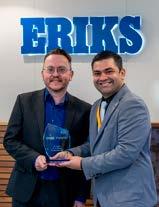
“Rather than unpacking boxes our local teams are now focused on helping customers solve supply chain and technical challenges. They have the time and the knowledge to understand their customers’ businesses and to solve their problems practically and quickly”
£49 Billion productivity boost for UK manufacturing in 2023
Analysis of Office of National Statistics data by FourJaw Manufacturing Analytics has revealed a productivity increase of £48.5bn or an increase of 8.6% versus 2022 levels.
New figures from Carbon Brief have revealed that the amount of UK electricity generated by fossil fuels fell 22% year on year in 2023 to the lowest level since 1957.
Harold Macmillan was UK prime minister when the UK generated less than the 104 terawatt hours (TWh) that were recorded in 2023. Corroborating these figures was analysis from the Energy and Climate Intelligence Unit’s (ECIU) power tracker which showed that power generated in 2023 by renewable energy sources had reached 90 TWh, sufficient to meet the UK’s domestic electricity demand.
However, the UK’s drive towards net zero will likely see electricity demand double from current levels in the coming decades, as transport and heating gradually move away from fossil fuels and towards electric solutions such as heat pumps and EVs. Battery storage will play a major role going forward and according to the ECIU, between winter 2021/22 and winter 2022/23, the pipeline of battery storage projects increased five times with the largest battery storage scheme in the world recently getting planning permission for a site near Manchester.

FourJaw found that the total value of UK manufacturing output reached £615bn in 2023. The end of the year was seen as particularly strong, with manufacturers producing goods worth £155bn in the final quarter. The total value of UK manufacturing output in the fourth quarter of 2023 was £3.5bn more than the same period in 2022, a year-on-year increase of 2.5 per cent, and £2.2bn more than in Q3 2023.
Despite the overall positive improvement, the analysis showed a mix of performance across sectors with 5 of the 9 sectors analysed showing productivity reductions in 2023. The major reason for the overall increase is the performance in the motor vehicles and transport equipment sector which continued to deliver large year-on-year improvements, producing £3.9bn more output in Q4 2023 than in Q4 2022. Food manufacturing and alcohol and tobacco production also improved output and productivity in Q4 2023, with food achieving a 6.3 per cent productivity gain year-onyear worth £1.7bn overall. Alcohol and tobacco, despite suffering a 1% productivity reduction in Q3 2023 achieved a 21.4 per cent productivity boost which was worth £1bn overall.


Fancy a night at the Oscars?

The
The Manufacturer Top 100 will take place on the evening of the 5th June as part of Smart Manufacturing & Engineering Week 2024.
The top industry award for individuals, the Top 100 programme provides a platform and a showcase to celebrate the best of UK manufacturing – not the big businesses and the household company names – but the inspiring people who make the industry tick. The Manufacturer Top 100 scours the length and breadth of the nation to find the 100 most dynamic leaders and innovators in manufacturing, nominated by The Manufacturer’s audience, the industrial community and judged by a panel of industry leaders, academics and manufacturing associations.
As Grace Gilling, Managing Director – The Manufacturer / Hennik Research (part of Nineteen Group) outlines, “The Manufacturer Top 100 celebrates the heroes of UK manufacturing and recognises their contribution to Net Zero, Digital Transformation, Innovation and Leadership. We also shine a spotlight on Unsung Heroes, Sector Activists and the Young Pioneers making an impact in the industry disproportionate to their years.”
Tickets and more information can be found at: https://themanufacturertop100.com/
Maintec thrives at Smart Manufacturing & Engineering Week
As announced in Know + How issue #49 ERIKS will be exhibiting at Maintec on 5th and 6th June 2024 at the NEC, Birmingham as part of Smart Manufacturing & Engineering Week.
With more than 10,000 manufacturers, designers, engineers and maintenance professionals attending in 2023 the event will expand way beyond 450 exhibitors in 2024 making it the UK’s largest industrial sector event of the year.
In 2023 Maintec ran alongside Smart Factory Expo and Design Engineering Expo in Hall 4 but 2024 sees the addition of Drives & Controls, Fluid Power & Systems and Air-Tech taking place in Hall 5. Laura Parris, Event Director for Drives & Controls at Nineteen Group said of the addition, “Drives & Controls is one of the great brand names in the UK industrial exhibitions sector. It has such a long history from the days when it overflowed from its original home in Telford to now where it finds its natural place as part of Smart Manufacturing & Engineering Week”.
A host of other live events will be taking place during Smart Manufacturing & Engineering Week 2024. These include three summits, 144 presentations across eight education theatres and two award ceremonies. A single registration allows entry to all the exhibitions as well as the other related events taking place at the NEC at the time which includes the UK Garage & Bodyshop event run by Messe Frankfurt; Med-Tech Innovation Expo and TCT 3Sixty from Rapid News Group and Subcon from the Mark Allen Group.
With so much going on during Smart Manufacturing & Engineering Week the organiser will be creating ‘visitor trails’ to help attendees tailor their experience to their own areas of interest.
To build a personal trail visitors must be registered in advance at: https://www.mandeweek.co.uk/

Steel industry heads towards an electric future
British Steel’s announcement that it is to close its blast furnaces in Scunthorpe putting 2000 jobs at risk has been quickly followed by Tata Steel in Port Talbot announcing restructuring plans that would cut 2800 jobs.
However, both businesses have softened the news by announcing plans to invest in greener technology with British Steel saying they will build two electric arc furnaces - one
at Scunthorpe and one at Teeside – and Tata installing an electric furnace at Port Talbot.
Blast furnaces use coke to reduce iron ore, whereas electric arc furnaces melt down scrap or recycled steel. Chief executive of Tata TV Narendran said: “The electric arc furnace need not be the end - it is the beginning.”
Tata has committed to investing £750m in the new electric arc furnace in Port Talbot, with support from a £500m government subsidy.
Welsh Secretary David TC Davies said, “Tata
will get the money in instalments, as the arc furnace is built in order to save 5,000 jobs”.
A British Steel spokesperson said the company was committed to “providing long-term, skilled and well-paid careers for thousands of employees and many more in our supply chains”. Both businesses have claimed that continued blast furnace steelmaking in the UK had become uncompetitive due to high energy, carbon and labour costs.
Far and away the best news from Verder
It doesn’t matter how far you are from a Verderflex peristaltic pump from Verder Ltd. Now the range is IoT enabled, you can monitor it remotely using the Remote Assistant IoT app.
Remote access to real-time pump performance data enables users to make better-informed decisions about pump operation, wherever they are. Using preset alarms or creating their own, Remote Assistant users can set up alerts for pumps’ critical functions, such as ‘pump stop’ and ‘tube burst.’
Hot stuff from Simatec
Heating a bearing is a well-known process to ease installation. But traditional methods like oil baths and blowtorches can be messy, hazardous, inconsistent and slow.
The Simatherm IH 045 bearing heater is completely the opposite.
The world’s first controllable induction heater equipped with an app, the IH 045 is also the smallest and fastest device in its class. Able to accommodate workpieces weighing up to 45kg, with inner diameters from 20-310mm, it can heat a 28kg bearing from 20°C to 110°C in just 20 minutes.
It can also do this consistently, time after time, thanks to 8-stage adjustable power levels, temperature controllers and timers. The app even allows control and setting adjustment from a remote location, which adds extra convenience and safety
The uniform heating provided by the Simatherm IH 045 ensures the bearing’s inner ring expands evenly, for easier installation, a perfect fit, and a longer bearing lifespan.
The app also enables simple messaging (‘Is it running?’), as well as providing complex data and tools for analysis.
This IoT connectivity can greatly enhance maintenance planning and scheduling for the highest efficiency. It is currently available on Verderflex products including dosing and metering pumps (such as the Ds500 and Vantage 5000), and the iDURA – which is ideal for fluid, sludge, and slurry transfer applications. The new feature not only makes remote monitoring simple, but can also help to improve efficiency, reduce downtime, and lower maintenance costs.
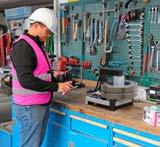

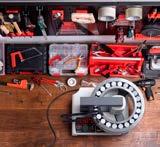

Schaeffler’s
shortcut to cutting emissions
For businesses wanting to reduce their carbon footprint Schaeffler’s cradle-to-grave emissions statistics for their products are a valuable resource. Currently Schaeffler offers the functionality to provide cradle-to-gate emissions. In 2024 there will be added functionality for customers to calculate emissions for the usephase of single bearings.
Schaeffler’s medias portal already shows how much CO2 is emitted during the production phase of bearings, but how much CO2 is emitted during their operation? Starting in 2024 via the same platform, Schaeffler will be able to make detailed CO2 carbon footprint calculations for the use-phase of these bearings.
This will help bearing customers to gain transparency of CO2 emissions of the complete lifecycle. With innovations in reducing friction losses and increasing energy efficiency, Schaeffler continuously works to improve these product carbon footprints.
In addition, a dedicated landing page with a range of sample calculations for CO2 optimisation in specific applications, Schaeffler’s CO2 tool on medias is a place worth visiting.

Spirax Sarco jackets button-up savings
Insulation is one of the most cost-efficient ways to optimise energy efficiency and thermal performance in industrial processes. Spirax Sarco insulation jackets – designed for a perfect fit on core Spirax Sarco products – are an easy short-cut to long-term savings.
Densely filled with mineral wool for optimal thermal insulation, a Spirax Sarco insulation jacket not only minimises heat loss, but also reduces energy consumption and prevents condensation.
However it’s not just about sustainability, but durability too. While some poorer quality jackets rely on less robust materials, Spirax Sarco jackets are made from 80g/m2 silicone glass fibre for extra strength and water resistance. They can be adjusted using a Kevlar cord, which is resistant to melting at temperatures up to 350°C, and are secured with a hook and loop tape which is meltresistant up to 210°C.
So get your steam system assets all dressed up in a Spirax Sarco jacket, and give all that expensive heat nowhere to go – except where it should.
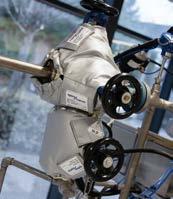
Eliminating weak links in the hygiene chain
In food, beverage and pharmaceutical production, hygiene comes first. But efficiency and productivity come a close second.
That’s why SICK sensors and accessories from Kempston Controls – for flexible automation, machine and process protection, quality control, and identification application solutions – are engineered from hygienic stainless steel.
Despite their compact dimensions, these stainless-steel sensors deliver exceptional performance. Manufactured from chemically- and thermallyresistant materials, they offer lasting impermeability. In addition, whether you need photoelectric proximity sensors (with or without background suppression), through-beam photoelectric sensors, or photoelectric retro-reflective sensors, you can choose stainless-steel versions for optimal hygiene.

SICK stainless-steel sensors are also available for safety technology tasks, identification of products and containers, position monitoring and path measurement, pressure, temperature, and level measurement, and packaging and contents inspection.
Reliability and high availability – even in harsh operating or wash-down environments –make SICK sensors essential components in many production lines. And their hygienic design makes them strong contenders in sectors where cleanliness takes priority, but productivity still counts.
New MRO supply chain report helps businesses improve their performance and reduce downtime
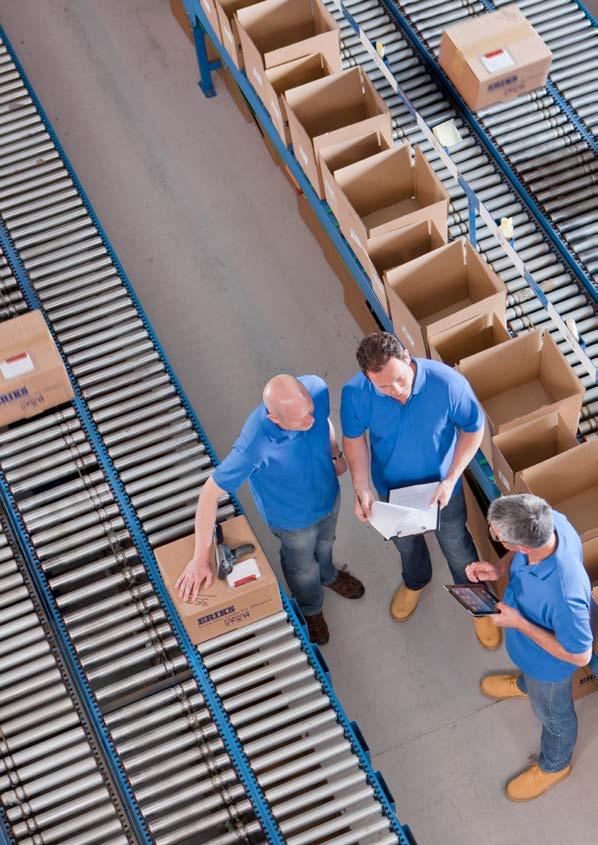
ERIKS has launched its MRO Supply Chain Report 2024 that, based on a major survey, looks at how the MRO (Maintenance, Repair and Operational) procurement, supply chain and the engineering stores function is currently approached across a wide section of UK businesses. The report is structured into five separate areas and its findings are in some cases shocking and in others helpfully enlightening.
The full report is available to download at: https://eriks.co.uk/en/solutionspage/onsite/ and in this article we preview its findings and conclusions.
People & Skills
The first chapter of the report looks at the people who work in these functions and the skills they have or need. The survey confirms, should we need it, that experienced engineers are hard to find and difficult to replace. They tend to work in small, busy teams with little time for training or passing knowledge on to less experienced colleagues.
Engineering stores teams are even smaller and when they lose a member of their team that loss is sorely felt. These factors often mean that the engineering team becomes more involved in MRO procurement and the engineering stores function than it would ideally wish to be. On occasion engineers are even given jobs in the stores due to their ‘understanding’ of the area.
With the difficulty in finding experienced engineers this is viewed as a waste of valuable resources. The survey also found that to avoid the issues raised above businesses look to outsourcing in these areas and it’s a growing trend.
There are a number of key factors that are creating this trend towards outsourcing but as we can see in FIG 1 staff retention and the lack of skills are strongly represented as is the need for people, predominantly engineers, to focus on key tasks.
Key factors in Outsourcing Decision
Outsourcing comes with the benefit that the vendor should be able to offer both technical and supply chain skills, knowledge and experience – allowing engineers to focus on their engineering tasks and building a more closely managed, more cost effective eco system around the MRO procurement, supply chain and stores function.
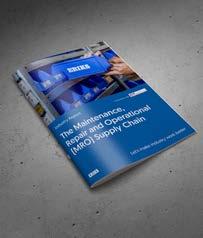
Number of respondents
Escalating operating costs
Operational efficiencies
Current staff leaving
Focus on core tasks
Lack of skills within the team
Stock check discrepancies
Large stock write-off
Finance
On the one hand this report might make uncomfortable reading for those business leaders and finance executives who, in most regards, are on top of all the relevant metrics for their business. But, MRO procurement, its supply chain and the engineering stores can be a difficult area in which to see things clearly.
There’s already a good deal of evidence about how UK businesses have stockpiled goods in response to the unprecedented global events of the last few years (up 99.7% from 2019 to an average of £730,681) but this report also drills down into how much of that stockpile is being written off annually and how obsolescence regarding MRO spares is a much misunderstood subject which, if managed properly, can not only prevent waste but also impact on production downtime.
With the discoveries in this area, it came as a surprise to learn that (in the period between 2016 and 2023) oversight in this area has reduced dramatically and in as many as a third of businesses the MRO procurement and engineering stores is being all but ignored.
Don’t Know
Over £1,000,000
£300,000 - £599,999
£100,000 - £299,999
£50,000 - £99,999
£25,000 - £49,999
Up to £24,999
Number of respondents Find
Procurement
They sound a little counterintuitive but the questions you might find yourself asking after reading the report’s chapter on procurement are: Is my procurement team too involved in the MRO spares procurement process? How much of our total procurement spend does MRO spares represent? How much time does the procurement team spend on these items? Do they add any value or could this be handled better elsewhere?
Our survey found, if we didn’t know it already, that engineers are risk averse and have trust issues and the ‘squirrel stores’, that are common in most types of businesses, essentially mean that they don’t trust the procurement team, they don’t trust the engineering stores team and also they might be a bit lazy when it comes to visiting the stores and doing the necessary administration – however quick that might be.
The knock-on effect of this behaviour, as we see in the survey findings, is that any metrics the business is gathering such as MRO stock write-off value or obsolescence figures are
inaccurate and that most financial controls are through such behaviour rendered at best incomplete and at worst useless.
Effectively managing inventory is a cornerstone for successful operation? The ERIKS 7 Stores Struggles spotlights critical pain points to think about - view here
% of respondents
Approving budget
Expediting orders
Raising orders
Obtaining quotes
Selecting suppliers
Specifying parts
Performance
When we surveyed how the performance of the engineering stores was measured, we got a dozen different answers, and all were eminently sensible but backwards facing.
From Work Order Completion rates to Stock Availability the responses were ‘workmanlike’. The overall conclusion is that there’s not a great deal of innovation or ‘value add’ expected from the area. When we flipped the question on its head, we asked our respondents what additional, proactive performance areas they would value.

From these responses it becomes clear that technical expertise and supply chain insight from their engineering stores would be seen as overwhelmingly positive.
MRO supply chain insight and knowledge can be viewed as being particularly important as, when the report analysed how long it takes to source and order a spare not normally stocked (which happens often), the responses were sometimes measured in days – a performance that would surely cause major headaches.
For us this is all about potential – current measures, however valid, are only providing a two-dimensional picture of what the MRO procurement and engineering stores function can provide and, our data would suggest, there’s a wider need to think in three dimensions to better meet the needs of the business.
What are the major impacts on productivity? The ERIKS 7 Productivity Problems highlights the pain points to consider - view here
Business Impact
If you have reached the end of this article, you still might be thinking ‘So what?’ Why should I care enough to actually read this report or recommend it to others in my business?
The ‘So what?’ is that everything in the report relates to downtime or to phrase it another way ‘Lost production time’ or another way ‘Losing money for no reason’.
The survey’s major finding is that despite its low prioritisation, issues relating to the MRO supply chain and the engineering stores function are the main cause of downtime. We also found that these elements should not be viewed in isolation and that by aligning your maintenance strategy with your MRO procurement and engineering stores operation you can gain real insight into the causes of downtime and help prevent it going forward.
Number of respondents
Obsolescence
Maintenance induced failure
Reduced operational budget
Skills shortage
Operator error
Spare part availability
Electrical failure
Mechanical failure
Ageing assets
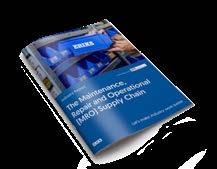
There are, sadly, no magic wands that can be waved over the area but looked at holistically the engineering stores, MRO procurement and the maintenance strategy if aligned could have a dramatic effect on reducing downtime which in turn makes every manufacturer and engineering business more efficient and ultimately more profitable. The MRO Supply
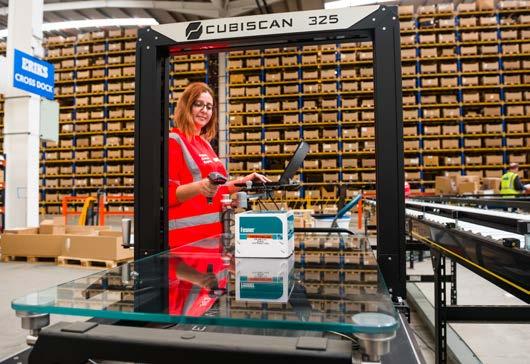
ERIKS hose technology centre gets £35k upgrade
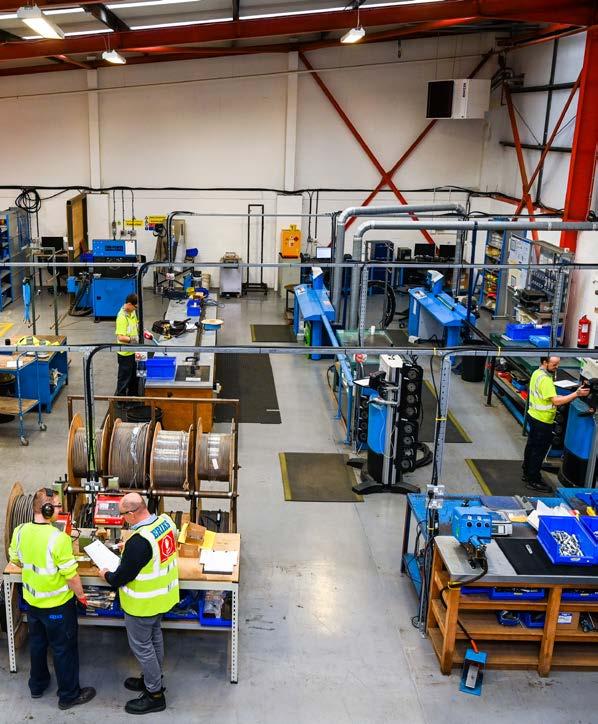
ERIKS Hose Technology (EHT) has completed an eight-week, £35,000 upgrade of its Northampton facility that not only increases its pallet storage capacity by 40% but also enhances its technical capability and its safety performance tremendously.

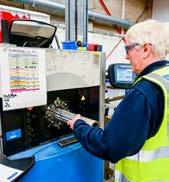
Achieve superior economies of scale
The Technology Centre is also recruiting to fulfill new business demand, enabled by the upgrade. The reconfiguration, within the original footprint of the building, has created more space for racking and therefore, EHT is in a far better position to support its expanding customer base.
EHT now holds more stock to support its direct and large strategic customers who typically have demands for same-day or next-day delivery for custom-flexible hose assemblies.
Guy Boomer, Director - EHT, says, “The reconfiguration has improved our ability to scale and grow the business by making more effective use of the space, the amount of product we can hold and the number of customers we can service. We can also purchase on a greater scale and therefore achieve superior economies of scale”.
As well as adding additional storage space, the reorganisation has also impacted on the production area, almost doubling the industrial hose capacity and expanding the technical capability of the technology centre through the addition of a PTFE hose production line.
As Guy comments, “We can now manufacture just about any flexible hose assembly imaginable. Our capabilities have evolved from just metallic and hydraulic hoses, and now include a comprehensive industrial hose solution. Phase 2 of the development, planned for 2024, will see further enhancements to our technical capabilities and product offering, which will include offices, meeting rooms, a viewing area for customers, two batch production lines and a semi-clean room environment.”
As a result of the increased capacity, EHT is looking to recruit more staff. “Firstly, we need to recruit more welders and assemblers to join our existing team and we will also be
looking to recruit another hose tester and Applications Engineer” says Guy, “We also have our first ever engineering apprentice joining us this year, and she’s going to get experience of all aspects of the business when she joins. We recruited her at our first engineering apprentice open day, plus we were fortunate enough to identify another outstanding candidate who subsequently joined the team as a hose tester.”
Improve health and safety
One of the original motivations for the reorganisation was to improve health and safety and to separate man from machines or more specifically man from forklifts. The reorganisation means that EHT now has a distinct warehousing section and a distinct production section whereas previously they were intermixed.
This meant that previously forklifts and people were in close proximity and there was lots of crossing traffic. The new layout removes these potential problem areas and results in a faster, slicker operation.
As well as working with many quality hose manufacturers ERIKS also has three ‘own’ brands – FLEXION, LMC, and Goodall.
We have set the groundwork for growth
FLEXION is a hydraulic hose and accessories range that covers 80-90% of applications, while the Goodall range has industrial hoses for different applications – steam, hygienic, radiator, suction and delivery etc.
This is complimented by LMC which offers an array of customisable fittings that have been designed for use with the Goodall range giving a robust, high-performance assembly. The reorganisation of the facility will allow the business to service its customers more quickly and effectively using these brands.
EHT in Northampton is nine years old and its primary strength is metallic hoses. “As far as hoses go, they are about as sexy as you can get.” says Guy, “Despite the fact that hoses are seen as a simple commodity in reality they are a critical product, and each order is a bespoke one.” Metallic hose currently represents about two-thirds of EHT’s business through both direct servicing of OEMs and through the ERIKS branch network.
The EHT also has design capability and works with hydraulic hose and industrial hose. Industrial hose is a highly skilled area and the EHT is now moving into more specialized areas with PTFE type hoses, focusing on hygienic applications in the chemical, pharmaceutical and food sectors.
Reflecting on the project and looking to the future Guy Boomer says, “Because of this upgrade to the facility we have set the groundwork for growth. We focus on an optimised engineered solution and work with our customers to offer them the benefit of our expertise and experience. This ensures that their systems operate as reliably as possible and that the solution we give them is fit for purpose.”
For more on ERIKS Hose Capabilities - click here

Be part of something special
With more than 1500 colleagues at over 250 locations doing amazing things, we wanted to bring everyone together and share some incredible stories.
ERIKS people are friendly and welcoming with a “can-do and will-help” approach at our core.



ERIKS welcomes its first apprentices
ERIKS has welcomed the first apprentices to its newly designed apprenticeship programme. The new programme demonstrates its commitment to fostering a new generation of engineers and bridging the engineering skills gap.
For the next four years thirteen apprentices aged between 17 and 27 will be pursuing Level 3 Engineering qualifications, across different ERIKS locations throughout the United Kingdom. In stark contrast to the persistent concerns around a lack of enthusiasm for engineering careers in the United Kingdom, ERIKS experienced a remarkable interest in its apprenticeship programme with 500 individuals applying for the initiative.
Futureproof the company’s workforce
Created from the ground up by Lori Broadhurst, Talent Development Partner at ERIKS, the programme represents an investment of £30,000 per apprentice. The aim, according to Lori is to “Futureproof the company’s workforce by not only nurturing career-specific skills but also fostering a sense of community among apprentices”.
While the apprentices will primarily hone their skills at their respective sites, they will gather every 4-6 weeks for “block release learning”


at SMB College in Leicester, ensuring a wellrounded formal engineering education as well as a practical, hands-on one.
Selecting the apprentices from the applicants was an enormous task as after the initial CV screening, 106 applicants were advanced to the telephone interview stage, and from there, 61 candidates were invited for inperson interviews. Successful interviewees were then invited to participate in an ‘Insight Day’, which took place at the specific ERIKS sites to which each had applied.
During the Insight Day, prospective apprentices had the opportunity to immerse themselves in the ERIKS work environment, collaborating alongside colleagues and truly getting a hands-on feel for the nature of the roles they were pursuing. In addition to providing the ERIKS team with further insight this crucially allowed the candidates themselves to confirm this was the environment in which they aspired to work.
While this, the inaugural year, focuses on engineering apprenticeships ERIKS plans to expand the programme into other areas such as sales, service, supply chain management, finance, and human resources in the future.

Collaborating alongside colleagues
Refreshingly, the company’s employees have embraced this initiative with open arms, showcasing their adaptability and enthusiasm for the apprenticeship scheme. “Everybody has really jumped in feet-first and helped tremendously in supporting the process,” Lori Broadhurst remarked.
As the November 2024 application cycle approaches, ERIKS is committed to refining its selection process, incorporating psychometric testing and behavioural analysis to ensure fairness and objectivity. In the long term, the company aims to broaden its early career development offerings including a graduate programme and other initiatives. Lori concludes, “We are establishing this programme to make it as successful as possible, paving the way for the future.”
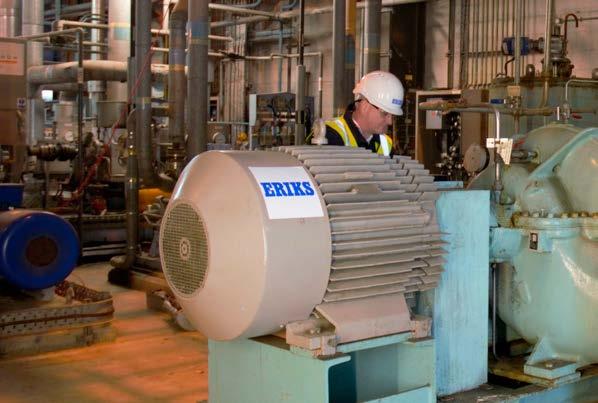
The early warning system for your pumps
Would you run your car without ever keeping an eye on the mpg? If you run your pumps without fluid monitoring, that’s effectively what you’re doing with these important assets. So, if you want to be sure your pumps are performing at their most efficient, you need ERIKS Smart Asset Management (SAM).
Efficiency drifts away from the optimum
In theory, every pump is designed for a specific duty. When it performs at that duty point, the maximum amount of energy will be converted into the required head and flow, efficiency will be at its optimum, mechanical stress and vibration will be minimal.
However, even brand-new pumps can operate much less efficiently than planned for, simply because they may have been under or over-specified. It’s a fact that most engineers will build in additional safety margins for head, flow, and so on. Then the supplier will probably do the same. Once the pump is installed, small changes to the system can have major effects on the pumps operating point.
The result is that the pump moves further and further away from its original design duty, and its efficiency drifts further and further away from the optimum BEP – Best Efficiency

Point causing mechanical stress, vibration and energy losses. Without fluid monitoring, you won’t know until it’s too late.
Get upstream of your pumping issues
Whether it’s due to over-specification or changes to the duty, your pumps can develop issues which should not be left to get worse.
Fluid turbulence, aeration, or cavitation for example, will cause vibration. But if you are only vibration monitoring your bearings the problem could be misdiagnosed as a bearing issue. Fluid monitoring, linked to the ERIKS SAM platform, would have enabled you to spot the issue at its infancy, resolve the root cause, restore the pump to its duty point, and avoid damage or pump failure.

Continual real-time monitoring
All the data, all the time
A snapshot is fine for your holiday memories. But a snapshot of a pump’s performance will only tell you what’s happening at one particular moment. Five minutes later, anything and everything may have changed. The strength of the SAM platform is that it provides continual real-time monitoring, and displays not only how the monitored pump should be operating, but also how it actually is.
So at any time it’s easy to see where and how far it drifts away from its optimum parameters or situations that cause large swings across the pump curve. That’s important because, when it does, problems can quickly be compounded.
Changes that lead away from the design duty – such as altering the system’s hydraulic characteristic, will reduce efficiency to a far greater extent, while having a negative
effect on both energy consumption and reliability. The SAM platform helps you to spot these changes and take the necessary action before they become more serious or irreversible.
Pumping money down the drain?
With the information fluid monitoring provides, you can see where your pumps are losing efficiency, where they’re wasting energy, and where they are costing you money.
ERIKS know-how on a dashboard
By determining where a pump is operating in relation to its duty point, fluid monitoring allows you to calculate and compare the optimum pumping cost with the actual cost. And by identifying where the inefficiencies are arising, you can take the necessary steps – such as refurbishing the pump, or coating the internals it to reduce friction – to enhance its performance, increase its efficiency and lower its operating cost.
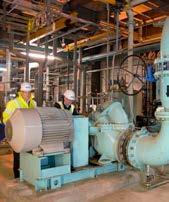
Protection for you and the Earth
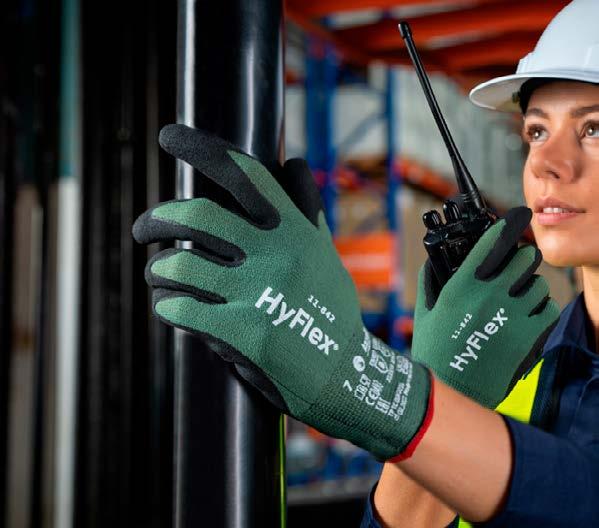
We’re all aware that we need to do everything we can to protect the environment. The product choices we make are one of the steps we can take. We also know that we have an over-riding duty to protect the people working in our industries. Now, thanks to the Ansell Earth initiative, it’s easier than ever to do both, with fewer negative environmental effects, and no less protection for people.
Help your sustainability and Net Zero aims
As a leading manufacturer of personal protective equipment (PPE), Ansell has never compromised on safety for users of its products. Meanwhile, behind the scenes, the company has also been making ever greater efforts to make those products more sustainable. In fact, Ansell has been reporting on its sustainability since 2016 and has a goal of achieving Net Zero in Operations by 2040.
Now the newly-launched Ansell Earth Program is not only the framework which supports that goal, but is also the key to helping you choose the most sustainable PPE for your business, to help with your own sustainability and Net Zero aims.
Sustainable from beginning to end
It’s easy for manufacturers to pick and choose where and when to be sustainable. Perhaps they use plastic-free packaging, for example, or their products are recyclable. (‘Where facilities exist’ helps to get them off the hook.)
What is harder is to think about sustainability from the raw materials used right through
Biodegradable, compostable or recyclable
to the end of the product lifecycle – and to make sure that products tick the right boxes at every stage.
The five pillars of the Ansell Earth Program do just that.
From Materials and Manufacturing to Packaging, Use and End of Use, the five pillars define the claims made for the Ansell

Verifies and substantiates every sustainability claim
Claims or credentials?
Claiming to be sustainable is easy. Being sustainable is hard. Proving it is harder still. But the Ansell Earth program verifies and substantiates every sustainability claim it makes for any product.
Since September last year, clear and proven sustainability information has been provided for selected products in the program. At the time of writing, there are 169 products covered by the program, and more are being added all the time. But no product will be

A big hand for the planet
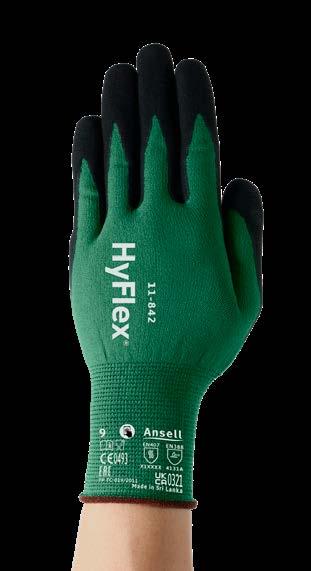
An innovative compostable glove and Ansell’s most popular general handling glove demonstrate how Ansell Earth helps the planet without compromising
The first compostable glove from Ansell panels and a Green Power Purchase company and 90% biodegradable within 180 days in industrial composting facilities. Ideal for use in food service, hospitality and retail settings where risk is low but
The FORTIX™ technology in this popular multi-purpose glove provides improved durability, which extends glove life and reduces waste to landfill. The glove has a sustainable liner made from 90% recycled nylon yarn, to reduce its carbon footprint eq per pair compared with a standard nylon glove. Plastic-free inner packaging contains 53% fewer materials. Providing twice as much grip, the glove also offers up to 20% greater abrasion resistance compared
The small part that plays a big part

Rob Bryan UK Territory Manager
If you are looking for ways to optimise the reliability of your assets and enhance the sustainability of your operations, you may be looking for the big, obvious wins. But what if you could achieve more by taking smaller, less obvious initiatives? Your choice of bearings for instance…
Although they’re often a relatively small part, bearings are found in countless assets and can play a big part in optimising sustainability, reliability and efficiency. Especially when they are bearings from NSK.
That’s because true sustainability doesn’t start at the factory gate. Every part of your supply chain needs to be as environmentally responsible as possible to make a real difference. Then, if these ‘greener’ products and services also help your assets to be more reliable and efficient, you’re not only well on the way to being more sustainable yourself. You also have the added bonus of reduced costs.
Aligning with efficiency
The wide range of energy-efficient NSK bearings can help businesses to save money by reducing machine running costs while cutting carbon emissions – contributing to more sustainable industrial operations overall. Also, NSK’s advanced laser alignment tools for shafts and belts can help eliminate misalignment and deliver savings.
Research suggests that 50% of equipment and machinery is running out of alignment at any given time.
Cement dust is an aggressive, intrusive substance
Misalignment usually occurs when couple shafts are positioned so that their gaps or offsets are beyond acceptable limits. The consequence is that shafts run off-centre, causing high loads, generating excessive heat and leading to greater energy consumption.
Telltale signs of misalignment include increased temperature, high vibration, loose coupling bolts or excessive lubricant leakage at bearing seals. Machines or systems showing these symptoms will almost certainly be using more power than they would if correctly aligned to run efficiently. NSK’s laser alignment tools have helped customers to identify savings of up to 17%.
In addition, correct alignment not only cuts power consumption but also reduces wear on important machine components such as seals and couplings.
Optimising the efficiency of assets in this way is a win-win situation. It helps to mitigate the impact of high energy costs, and it benefits the environment by reducing energy consumption and carbon emissions.
Grooves, grease and greenness
Up to 40% of global electricity consumption comes from electric motors and their associated systems.
Fresh pairs of eyes and new ways of thinking
NSK’s range of energy-efficient bearings not only offers customers the chance to save money, but also to cut carbon emissions and operate more sustainably. For example, NSK deep groove ball bearings produce up to 60% less friction compared with conventional deep groove products using a steel cage, and 80% less when they use plastic.

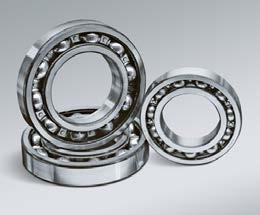

Add in NSK’s EA7 grease, and internal friction is further reduced, while lubricating properties are enhanced when microvibrations are present. This low-viscosity, friction-reduced lubricant is the ideal solution for any manufacturer wanting to reduce torque, minimise power loss and cut carbon emissions.
Positive about neutrality
As a manufacturer, NSK has its own ultimate goal of carbon-neutrality.
A quick two-hour sprint
Recent initiatives towards that end have included the introduction of new gas-fired boilers at the Kielce plant in Poland, to replace old coal-fired boilers. This investment alone is expected to save up to 2,500 tonnes of carbon emissions per annum.
Meanwhile at the NSK European Distribution Centre (EDC) in Tilburg, in The Netherlands,
a successful contract negotiation with its energy supplier has resulted in the Centre being supplied exclusively with 100% certified ‘green’ electricity. This initiative will save 400 tonnes of annual carbon emissions.
Alongside these improvements in energy use, the company is also taking steps to reduce water consumption and waste generation. The Kielce plant has lowered its water use by 500,000 litres a month by changing to a recirculating system for cooling the site’s remediation pumps.
And a UK NSK plant in Newark, Nottinghamshire, has installed the company’s first rainwater harvesting unit, which has been estimated to have saved 200,000 litres of mains water in its first twelve months of operation.
So when you choose NSK bearings, you can be sure that you’re not only doing your best for the sustainability, reliability and efficiency of your own operations. You’re also playing your part in protecting the planet.
If you joined all your hoses end to end…
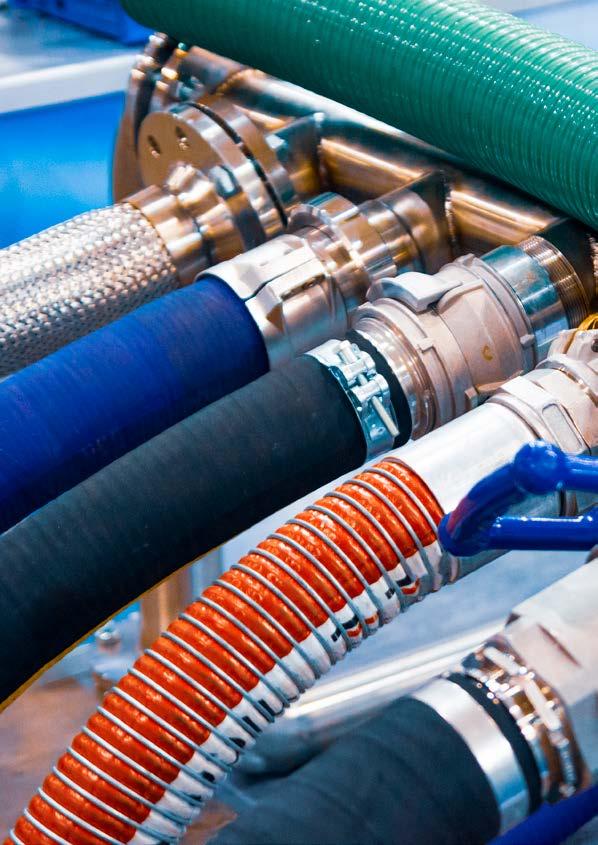
…the chances are you’d find numerous leaks, many old hoses overdue for replacement, and several corroding connections. Or to put it another way: countless accidents waiting to happen. Fortunately the ERIKS Hose Management System can help you keep tabs on your static and dynamic hoses – to keep your employees safe, your processes efficient, and your site on the right side of the HSE.
Properly maintained hoses make the
difference
between incident-free operation and explosions or major accidents
Your engineers have a lot on their plate. On any list of planned maintenance tasks, or maintenance inspections, hoses will come pretty close to the bottom. In fact, despite British Fluid Power Association (BFPA) guidelines stating that hoses should be swapped out every five years, they often won’t be replaced until they actually fail. Yet hoses are as critical as the vessels they feed into, the tankers they are used to discharge, and the pipework systems they connect to.
At an ATEX or COMAH regulated site, properly maintained hoses can also make the difference between incident-free operation and explosions or major accidents.
As recent inspections by ERIKS hose experts at customer sites have proved, a Hose Management System not only takes a load off your engineers’ shoulders. It can take a weight off your mind too.
Surprising, and frightening, statistics
Hose safety lows
A recent visual inspection of hoses at a customer’s large ATEX- and COMAH Tier 1-rated site produced some surprising, and frightening, statistics.
The inspection – which looked for leaking or corroded hoses or connections, and signs of age – assessed 825 hoses. These included high-end PTFE hoses, general industrial hoses, and specialist hoses for the transportation of various chemicals. The failure rate, indicating hoses which were leaking, overdue for replacement, or otherwise at risk of failure, was a staggering 15%.
That’s just under 130 hoses which had the potential to cause a process breakdown or stoppage, a health and safety incident, or even a major or catastrophic accident.
A survey at another customer’s site, which covered a total of 262 hoses, revealed a 50% failure rate. Whilst a survey at a chemicals company discovered almost 125 hoses in need of replacement.
Keep your site compliant with HSE, ATEX or COMAH regulations
Excellence, not Excel
Although many sites may have a system of sorts for recording hose assets, it’s often nothing more sophisticated than an Excel spreadsheet. And without regular inspections of the assets, it’s little more than an inventory.
The ERIKS Hose Management System goes much further: recording detailed information about every hose surveyed [see box-out] and tracking their age, so that they can be replaced in a timely manner. All the asset and tracking information is displayed on a digital dashboard, making it easy to access and understand.
A full written report is also provided after the initial hose inspection. This includes not only information on hose condition, but also recommendations for hose upgrades and proposals for particular applications, such as different fittings and other enhancements.
Alongside the ongoing monitoring via the dashboard, the ERIKS Hose Management Service also offers monthly meetings and annual hose inspections.
To help keep your site compliant with HSE, ATEX or COMAH regulations, contact your usual ERIKS Service Centre to ask for an initial hose survey.
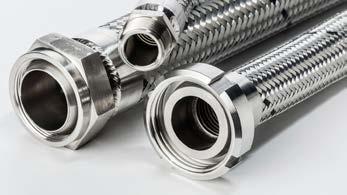
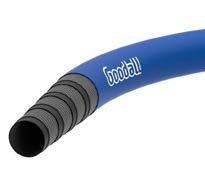

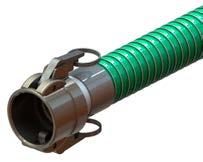
Keeping tabs - and tags
on hoses
Once a hose has been inspected by ERIKS’ engineers, it is physically tagged with a unique number and a barcode or QR code. This makes it easy to check all its details on subsequent inspections, via the Hose Management System dashboard. This dashboard is populated initially by ERIKS, then jointly managed with the customer.
Information on the dashboard comprises:
Dates of manufacture and modification
Certificates of conformity Inspection
dates OEM technical drawings
In addition, the management system software will monitor the age of each hose, and provide a ‘Valid’, ‘Almost Expired’ and ‘Failed’ warning based on the BFPA 5-yearly replacement guideline. 3 months’ warning of expiry allows sufficient time to organise a replacement hose and schedule an engineer to swap out the old hose.

Committed to achieving carbon neutrality by 2050 3M
Science for Sustainability
As one of world’s leading science and technology companies, 3M recognises its responsibility to uphold environmental protection and promote social justice. Our products are used by billions of people around the world, and we are committed to innovating to decarbonize industry, accelerate climate solutions, and improve our environmental footprint.
How are our production facilities are changing?
Our manufacturing teams play a pivotal role in helping us improve the sustainability of our production facilities. Much effort goes into reducing 3M’s energy use and our transition to renewable energy.
Minimize packaging material whenever feasible
For many years, 3M has been setting ambitious goals and initiating actions to achieve them, which are documented in our annual Global Impact Reports. We have also committed to achieving carbon neutrality by 2050.
Alongside this, we’ve committed to meeting the 17 Sustainability Development Goals (SDGs) created by the United Nations, which we categorize into three pillars within 3M’s Sustainability Strategic Framework:
Science for Circular – Designing solutions that do more with less material to help create a global circular economy.
Science for Climate – Innovating to decarbonise industry, accelerate global climate solutions and improve our environmental footprint.
Science for Community – Creating a more positive world through science and inspiring people to join us in our goals.
Manufacturing relies on water as an important component and even sometimes as a raw material. However, current global use of this vital resource is straining ecosystems. At 3M, we strive to use technology and expertise to promote a future of “water circularity” — a future where water stress is eliminated, resources are circulated, and nature is regenerated.
Our European Personal Protective Equipment (PPE) factories in England, Germany and Poland are all ISO 14001 certified and operate with 100% renewable energy. By 2025, we want to reduce our water use by 20% for production in all plants. In the area of new plastic, we expect to save almost 57,000 tons by 2025 and rely solely on recycling and the use of recycled plastic material.
Reducing packaging and replacing plastic
We are reviewing the materials and plastic inserts used in our packaging to see where
we can reduce and replace them. For example, the Aura respiratory product range will contain up to 30% recycled material in the flow wrap and at least 25% recycled content in the valved product, starting in 2024.
We’ve also created Environmental Product Declarations for specific Aura Respirator products to increase the transparency of their carbon footprint.
Another example is the earplugs of the 3M™ 1200 series. They no longer include a hard plastic storage box, recognizing there are people who don’t need them. However, the storage boxes can still be ordered separately if required. The packaging of 3M™ PELTOR™ Active Hearing product range is FSC-certified, which means that products come from responsibly managed forests.
As a general practice, our goal is to minimize packaging material whenever feasible while enhancing the reuse and recycling of

materials. We firmly believe that the most sustainable products are those designed to be durable and built for longevity, promoting circularity throughout their lifecycle. 3M Division offers service and maintenance for many products, including welding and active hearing headsets, ensuring they can be used safely and effectively for longer.
Every product developed with Sustainability in Mind.
Environmental protection starts with product development. 3M uses and combines our technologies in unique ways across the company, creating new products and new lines of business. As we do this, we require all 3M products entering the new product commercialization process have a Sustainability Value Commitment that demonstrates how the product drives impact for the greater good.
3M looks at a wide range of aspects including reusability, recyclability, energy savings, waste reduction, water savings, responsible sourcing, and the use of renewable materials appropriate to the specific product, from the beginning to the end of each product’s life cycle.
As part of the Supply Chain Due Diligence Act, 3M checks our suppliers for fair and humane conditions. We’ve also set up
projects for the training and the continuing education of our own employees and customers. Local and regional activities for environmental protection and social projects also play an important role. 3M is committed to delivering on our most material environmental, social and governance (ESG) priorities, and we drive this further into the Personal Safety Division (PSD), where our primary objective is to provide products that protect workers.
Provide products that protect workers
3M at the UN Climate Change Conference (COP)
3M and UN Climate Change partnered to address climate challenges in 2021 and drive collective solutions. Starting at COP26, 3M worked with the UNFCCC and its partnership network to drive collective action on climate change, social and environmental responsibility aligned with the UN Sustainability Development Goals.
From November 30 to December 12, 2023, 3M had a robust presence at the 28th United Nations Framework Convention on Climate
Change (COP28), where we engaged with and learned from our peers, strengthened collaborations with governments, nonprofits, and corporate partners, and leaned into four key themes:
Responding with urgency
Leadership and collaboration
Progress through science and technology
Action via solutions
Work with us to minimize impacts
While production and work processes are complex, products must always fulfil their value proposition and be economically producible. With our 51 technology platforms and our commitment to scientific methods, data, and facts, we aim to make a significant contribution to environmental stewardship. We work closely with our customers to provide the necessary data, such as Life Cycle Assessments, and create a roadmap to decreased product impact.
Learn more about the 3M sustainability goals here
No trouble at t’mill

Money doesn’t grow on trees. If it did, an ERIKS customer in Dumfriesshire would be perfectly placed to make the most of it. Instead, they came to ERIKS to find savings which not only reduced their energy costs but also secured employment for local people.
Rising cost of energy
Albie Forestry Ltd was established in 2010 by husband and wife team Michael and Donna Newton. The business began in timber harvesting: felling and hauling timber from local forestry sites.
Following thirteen years of very hard work and determination, Albie Forestry Ltd were given the opportunity to branch out, by purchasing a sawmill which could process the timber into high quality fencing materials and co-products. With their own equipment for felling the timber, their own lorries for haulage, and now their own mill for processing the wood, the business offers a full forest-to-finished-product service.
However, a year or so after the purchase of the mill, the rising cost of energy began to have an impact on profitability, and redundancies to cut costs were looking increasingly likely.
Fortunately, a walk-round of the site by an ERIKS Projects and Innovation Manager, with a follow-up site survey by an ERIKS Application Engineer, helped the customer to tell the wood from the trees.
Comprehensive energy-saving and payback report
Learning from a 1 year-old
To the trained eye of an engineer with ERIKS know-how, there are motors, and then there are motors. And at the customer’s sawmill, out of approximately thirty motors, only one met with the engineer’s approval.
That particular motor was an IE3-rated Premium Efficiency model, of around a year old. The other motors on the site were older, less efficient, more energy-hungry and therefore significantly more expensive to operate.
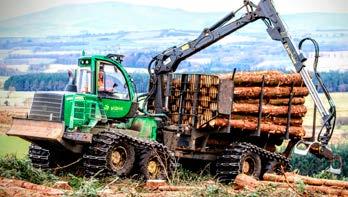
Also, and hardly less important for a business looking for ways to be more sustainable, the older motors created significantly higher levels of CO2 emissions.
Clearly the one year-old motor could teach the customer a thing or two about cost savings. But replacing thirty other motors wasn’t something to rush into on a hunch. So ERIKS put together a comprehensive energy-saving and payback report, to show the customer just how much they could save by taking the plunge and investing in new energy-efficient WEG motors.
An ill wind…
It’s not often that an increase in energy prices is good news. But in this particular case, the price rise that took effect between the initial project estimate and implementation grew drastically and the payback period shortened significantly.
Since ERIKS prepared the calculations for the customer, they witnessed a huge 150% rise in the initial energy costs, making it even more vital to work with ERIKS to deliver a long term benefit.
The 150% increase meant that the payback period – initially calculated at 3 years 5 months – would be reduced to just 1 year 4 months. At the same time, annual CO2
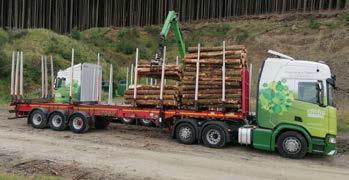
Payback in just 1 year 4 months
emissions would be reduced by 18.1 tonnes –or 271.5 tonnes over the lifetime of the motors.
However the savings – and ERIKS’ support –didn’t end there.
A helping hand-out
Having locally-based engineers means ERIKS know and understand local conditions, opportunities and available support. So although the customer wasn’t aware of the small business funding available from the Scottish Government, ERIKS were.
With help from ERIKS in putting together a Total Cost of Ownership calculation and other information, the customer was able to secure Government funding of 30% of the value of the motors, together with a 12-month 0% finance loan for the remaining 70%.
This not only meant that the company could afford to invest in the motors, but also ensured that two potential redundancies were averted. So with the future secured, it looks as if this timber business will keep on growing.
Statement
ERIKS have stood out for their commitment to excellence in every aspect. The team’s dedication to quality and professionalism is evident in their seamless collaboration and efficient problem-solving.
This project has delivered significant business benefits by enhancing operational efficiency and driving revenue growth. Overall, the project has proven to be a strategic investment, contributing positively to the company’s long-term success.
How to pluck energy savings out of the air
 Mervyn Norris Product Manager, Fluid Power
Mervyn Norris Product Manager, Fluid Power
Nothing concentrates the mind like rising energy prices. But if you’ve already taken all the obvious energy-saving steps you can, where will your next savings come from? Don’t worry if you can’t see them: they’re invisible. You’ll find them in your compressed air.
Just like the air you breathe, you probably take compressed air for granted. Yet take the time to look at where – and how efficiently – you use it, and you could find some significant savings. Not only of compressed air, but also of energy and money.
Top six energysaving tips
Six education
When something is so widely used in so many different ways as compressed air, it can be difficult to know where to start looking for savings. That’s why Festo – the experts in pneumatic control systems – have come up with the top six energy-saving tips for compressed air. And they start with the simplest of all: turn it off.
Because air is always available, many people think compressed air should be too. But why run a compressor 24/7, when compressed air will only be needed for a fraction of that time? Most compressed air systems only run at or near full capacity for up to 100 hours out of 168 in the working week.
By examining your shift patterns, and thinking about when you really need compressed air to be available, you should be able to identify many times when you can simply switch off your compressor and cut out the energy cost. But remember if with your shifts you can’t turn off the compressor, but you can shut down a production line then don’t just turn off the electrical power to the line but also isolate the compressed air. Otherwise, compressed air production – and unnecessary energy use –carries on.
This one simple step could shrink your energy bills by up to 20%. But if you want it to be even easier to make savings, the MSE6-E2M unit from Festo will monitor compressed air usage at line and machine level, and automatically reduce the system pressure to 0 bar when production stops.
Pssst! You’re leaking energy
Compressed air leaks aren’t obvious. Escaping air can’t be seen, and often can’t even be heard. Yet on average, systems lose up to 40% of generated compressed air through leakage. So fixing the leaks will quickly deliver real savings.
Shrink your energy bills by up to 20%
Most leaks are from badly installed or poor quality fittings, or poor quality tube. Even something as simple as using a proper tube cutter instead of a Stanley knife or similar will help to improve joints and prevent leaks. And using a high-quality tube with the right fitting – whether it’s plastic, brass or stainless steel – will make every connection even more leakproof.
For every pneumatic tube there’s a perfect Festo fitting – including widely-used and easy-to-install pneumatic push-in fittings. For the tubing itself, Festo PUN-H / PUN-H-Duo is the most popular. Made from polyurethane, it’s flexible, hydrolysis resistant, and FDA foodsafe approved.
If you’re not sure how to find your air leaks, ERIKS can provide an Air Leak Survey, and advice on the most effective Festo solutions to improve your system’s efficiency.
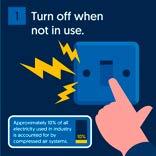
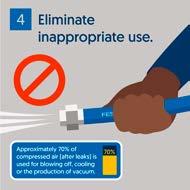
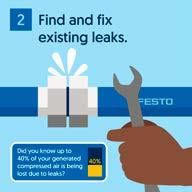


Take the pressure off
Dropping the pressure in your compressed air system is a sure-fire energy-saving measure.
Though most factories can operate efficiently at 5 bars, some applications require more. But the solution is not to boost pressure site-wide. Instead, optimise the pressure for individual applications in one of two ways.
Either install pressure regulators and gauges for every application, or a Festo Pressure Booster DPA where an application demands higher pressure. Then you can reduce the pressure for applications which don’t require higher pressure, and reduce your energy consumption by 7% for every 1 Bar reduction.
Is air the answer?
Around 70% of compressed air production (after leaks) is used for blowing off, cooling or producing a vacuum. But it may not be the most cost-effective solution. An Air Blower or Vacuum Pump, for example, will use a smaller motor than a compressor, and therefore use less energy to do the same job.


Solutions to improve your system’s efficiency
However, when compressed air is the answer, you can still enhance its efficiency. A specialised accessory like the Venturi air nozzle from Festo, used for blowing off, drying or cleaning, can cut compressed air costs at point-of-use by 10-90%.
Knowledge is (less) power
Only when you know and understand how your compressed air system is operating, can you do whatever’s necessary to make it more energy-efficient.
The Festo Flow Sensor SFAM will deliver continuous absolute flow rate information, as well as cumulative values based on air consumption measurements. Any increase in flow rate will be your air leak alarm bell, enabling you to fix minor issues quickly, before they become major, power-hungry problems.
The hot tip
Compressed air has many uses and, as you can see from the ideas above, offers many ways to save you energy. But there’s one more energy-saving tip which you may not have heard of: using compressed air to heat your buildings.
Around 80% of the energy created by compressing air is given off as heat. Rather than letting this go to waste, it can be redirected into ducting to provide heating, or be used to pre-heat water via a heat exchanger retrofitted to the air compressor cooling system.
It’s just one more way you can pluck energy savings out of the air. Why not ask ERIKS for more advice and expert help? You can trust them not to talk a load of hot air.
Optimize your Compressed Air System and reduce energy costs with the Festo Top Tips
Efficiency or functionality? Why it’s no longer
Jekyll or Hyde.
 Marek Lukaszczyk Marketing Manager, WEG Europe and Middle East
Marek Lukaszczyk Marketing Manager, WEG Europe and Middle East
Good or bad? Left or right? Either/or? Would you prefer a premium energy-efficient motor in your production plant – incurring an extra cost? Or a standard motor that gets the job done and no more? The good news is, combining efficient motors and drives with digital solutions, can give you sustainability and an improved total cost of ownership (TCO).
Balance functionality with energy efficiency
Maintenance engineers and plant managers have traditionally been on opposing sides in an efficiency v. functionality battle. While the engineers’ priority has been to keep the plant running, managers’ have been trying to balance functionality with energy efficiency. But now that it’s every plant employee’s responsibility to seek sustainability, maintenance has an integral part to play.
The question is: how?
Electric motors, for example, represent around 50% of global electricity consumption. So reducing this will be vital to achieving sustainability goals. Reduced power consumption and energy costs will, of course, result from increasing plant efficiency and environmental compliance – and inevitably, a reduced TCO will follow.
How efficient is ‘efficient’?
The energy efficiency level of an electric motor is calculated as the ratio of mechanical output power to electrical input power, and expressed in International Energy (IE) efficiency classes.
IE1 is the lowest classification level, and IE5 the highest. Since July 2023, European legislation adopted by the UK states that 75200kW motors must meet the IE4 level. The EC predicts this new legislation will save 110 Terawatt-hours (TWh) by 2030 – equivalent
Efficiency in action
WEG’s extensive range of energy efficient electric motors for safe and hazardous applications is rated at IE4 and IE5, and offers significant energy savings.
The W22 Permanent Magnet (W22 Magnet) electric motor, for example, is highly effective in reducing motor temperatures and maintaining consistent torque, particularly at lower speeds.
It enhances motor productivity, minimises electric losses and temperature and, when controlled by an inverter, gives impressive energy savings and application versatility.
Impressive energy savings
One of Brazil’s leading packaging and disposable plastic manufacturers, Orleplast, deployed multiple W22 Magnet motors at its Santa Catarina facility, ranging from 200 to 250kW. A WEG CFW11 VSD was incorporated for added energy efficiency.
The result was energy savings of 286,416kWh per annum: equivalent to powering 85 homes for a year.
Higher with hybrid
If IE4 efficiency delivers such impressive results, what can be achieved with an even higher efficiency motor?
The WEG W23 Sync+ motors are a hybrid innovation combining permanent magnet
This offers a higher level of efficiency for the entire speed range compared with conventional induction motors – up to IE6 – and a higher power factor than SynRM motors.
The W23 Sync+ motor line unlocks energy savings that have a direct impact on CO2 reductions for production facilities. In fact, WEG has calculated that replacing an IE3 induction 75kW 4 pole with an IE6 W23 Sync+ motor variety may result in a reduction of 126 tons of CO2 during its expected 25-year lifetime.
Making maintenance work sustainable
The sustainability of these more efficient motors and drives cannot be denied. But how can it be combined with the pragmatism of maintenance work? One answer is to introduce digital software such as WEG’s Motion Fleet Management (MFM) into the equation.
That was the solution for a petrochemical manufacturer experiencing at least one motor failure a month. Seeking to enhance Overall Equipment Effectiveness (OEE), the company chose the WEG MFM digital platform to handle remote monitoring and maintenance.
Six-months with no motor failures

Data gathered by MFM from sensors fixed to the motors was translated into user-friendly indicators, graphics and a historical dataset, making analysis straightforward. The plant’s maintenance team used this data for its own predictive maintenance strategy, resulting in a full six-months with no motor failures.
WEG also employs the MFM platform at its own electric motors plant in Brazil. As a result, OEE rose from 76% before implementation in 2018, to 84% by
So efficiency v functionality is still an either/or situation. But now it’s either talk to WEG about energy-efficient motors, or miss out on sustainability and a lower TCO.
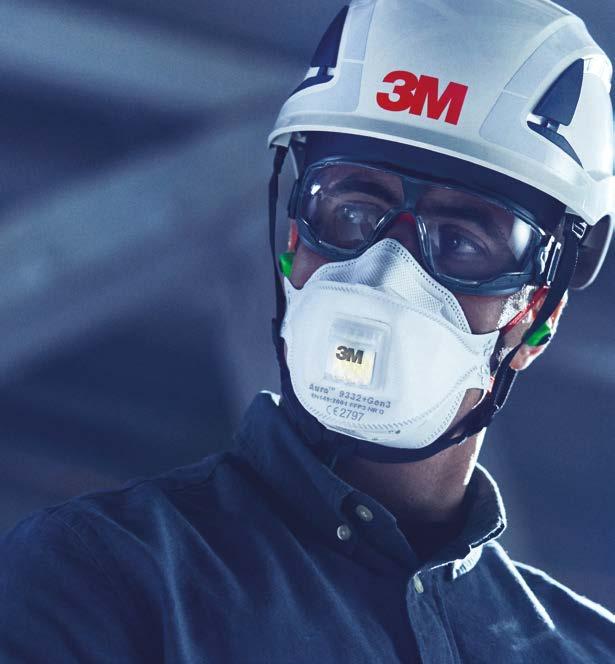
How to Advance your steam system
Steam systems are the very definition of sustainable – as long as they are mechanically correct, optimised and well maintained. The Spirax Sarco Advance Steam Consultancy Programme will help you to ensure that your system is ready to advance to more productive, efficient and sustainable operations.
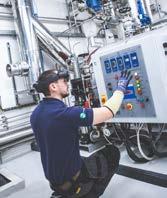
Natural technology delivering a sustainable future
Where most people see only steam, Spirax Sarco see a natural technology delivering a sustainable future. That’s because a well maintained steam system is unlikely to contain any potentially harmful volatile substances or contaminants.
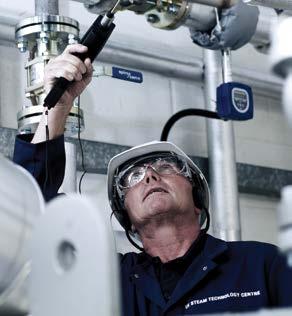
Combine this with Spirax Sarco’s steam quality management expertise and customers can expect to optimise their existing steam system plant and processes to do more - potentially with less.
A vision through steam
Spirax Sarco’s Advance Consultancy Programme works with you to create a clear vision of your site’s processes. This allows you to harness your steam energy most efficiently, while optimising productivity for a naturally efficient, wholly sustainable future.
By deploying steam quality management tools and advising you on the application of steam system engineering Best Practice, Spirax Sarco will help you to achieve a mechanically correct and appropriately maintained steam system. One which raises, distributes and delivers steam of the correct quality and quantity to all points of use.
Then, once a robust baseline has been established, you can focus on steam system optimisation and – where appropriate –demand reduction and energy cost savings.
Steam on stream
Used correctly and efficiently, steam can be the perfect pathway to meeting your sustainability targets. And Advance Consultancy is the gateway.
Consulting expertise and carefully tailored steam-powered solutions can lead to twentyfirst century operational efficiency and
Demand reduction and energy cost savings
sustainability, as well as resolving multiple business and productivity challenges.
The Advance package brings together system audits, Best Practice system design – including Health and Safety considerations – and engineered products and system solutions. Supported by full project management, commissioning, and connected services allowing for continuous 24/7 monitoring.
You can rely on steam not only to bring you energy savings, but to help you achieve on your overall site’s KPIs and objectives whilst giving you complete peace of mind on your sustainable steam journey.
Working together with ERIKS, Spirax Sarco’s consultancy service delivers energy savings and steam system optimisation which is Advance by name, advanced by nature. To discuss the programme in more detail, and to discover the best way forward to meet your own site’s needs and objectives, contact your usual ERIKS representative.
Expanding the menu for food industry bearings
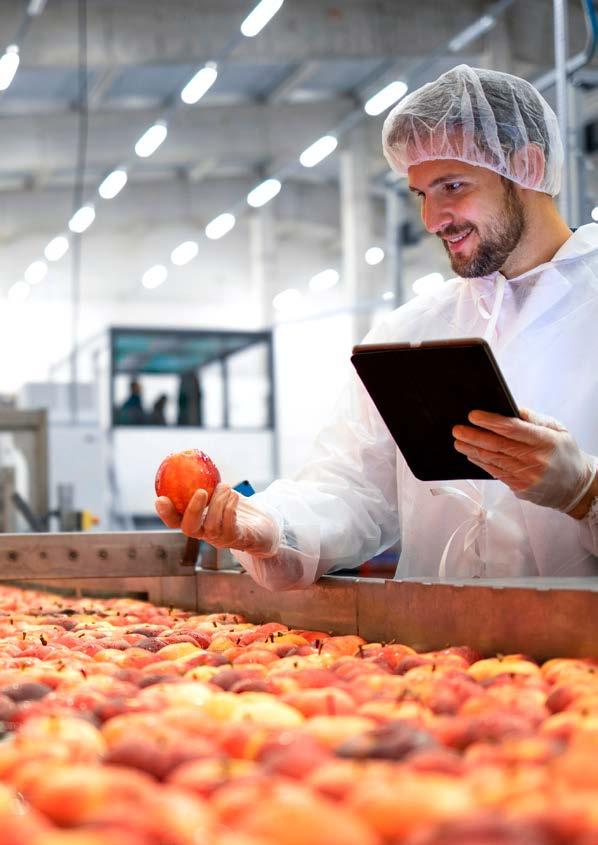
If you thought the SKF Food Line deep-groove ball bearing – launched last year – was tasty, here’s a surprise. It was only an appetiser. Now SKF are serving up a new spherical roller bearing design which offers all kinds of mouth-watering ways to help the food and beverage industry maintain food safety standards, comply with industry regulations, and save money.
Compliant with food safety standards
The SKF Food Line spherical roller bearing (SRB) is the first-ever SRB specifically designed for the food and beverage industry. So now for the first time, the industry can benefit from the advantages of the bearing type invented by SKF back in 1919. That means handling very heavy radial and axial loads, in applications prone to misalignment or shaft deflections, with lower maintenance costs and longer bearing service life.
But in an industry where food safety and avoidance of contamination are paramount, there’s even more to consider when designing a bearing. So, SKF has looked at all the ways to meet the food safety standards and incorporated them into the new bearing.
Firstly, Food Line SRBs contain food-grade grease, so there are no worries about contamination. Secondly, they incorporate a special high-performance food-grade seal to minimize contamination risk in the first place. Lastly,the colour of the bearing seals provides additional food safety and easier optical detection.
Prolong its service life
And if raising food safety standards and lowering food contamination risks isn’t enough, the new Food Line SRBs also increase machine reliability, extend maintenance intervals, and provide an even longer service life than SKF open SRBs.
Loads more to offer
A high load-carrying capacity makes the new Food Line SRB a very valuable addition to the SKF bearing menu. And being pre-filled with NSF category H1 grease, which is optimised for food industry use, it’s ideal for applications where there’s any risk of food contact. However the specially engineered seal makes any escape of grease highly unlikely. Made from high-performance, nitrile butadiene rubber, the seal is approved by both the FDA and EC, and is designed to protect against water, detergent and contaminant ingress. Also, by minimising the risk of grease leakage, it reduces relubrication and associated costs, raises bearing performance, and extends service life.
As an additional food-safety precaution, unlike standard seals, the Food Line SRB seal is coloured blue, which makes the fragments far easier to detect.
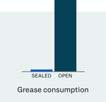


Safer savings
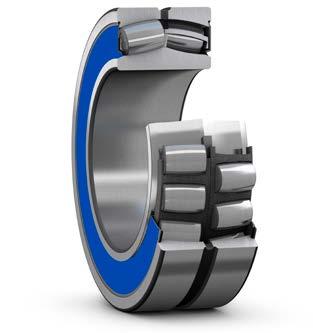
Engineering a better bearing for the food and beverage industry isn’t just about improving food safety and hygiene. It’s also about helping to save money.
So the new SKF Food Line SRB has a number of engineering features to help prolong its service life. The self-aligning bearing is manufactured to the Explorer performance class [see box-out], from steel with high fatigue resistance. It has a high dynamic load carrying capacity, and also benefits from reduced vibration and heat generation. The bearing also has a food-grade seal and foodgrade grease.
Together, these factors help to lengthen the service life of the Food Line SRB by an average of up to three times that of open bearings.
Sustained improvements
Swapping a standard bearing for the SKF Food Line SRB can be a major step towards more sustainable operations.
Its low-friction seal not only reduces energy consumption but also cuts CO2 emissions. Because the bearings last longer, they need replacing less frequently – which means a smaller demand for raw materials, manufacturing, and transport. And because bearings last longer there are reduced maintenance costs with fewer relubrication tasks, and minimised purchase and disposal costs. Also, thanks to the design, there is significantly lower grease consumption.
A major step towards more sustainable operations
With so many clear advantages over other bearings for the food and beverage sector, there’s no need to make a meal of choosing your bearings. Just pick the SKF Food Line SRB.
Upgraded for longer service life
All SKF spherical roller bearings have been upgraded to the new SKF Explorer performance class specifications, featuring a combination of high-quality steel and an improved heat treatment process. The result? A superior balance between hardness and toughness. Benefits include:
Increased uptime
Improved reliability
Higher productivity levels
Reduced noise and vibration levels
Excellent wear resistance
Are you due for an air cut?
 Dan Ives Senior Project Engineer
Dan Ives Senior Project Engineer
If you’re being scalped by energy bills for your compressed air, the new air management system from SMC could stop you tearing your hair out. A revolutionary next-generation solution, the AMS20/30/40/60 series could reduce your air consumption by up to 62% –and cut your bills and CO2 emissions accordingly.
Increased costs from wasted energy
From automotive plants to textile factories, from food to forestry, and from electronics to life sciences, countless manufacturing and processing plants use compressed air as part of their operations. So it’s hardly surprising that badly managed or maintained compressed air systems are a major factor in energy wastage and excessive CO2 emissions across all these industries and more.
Poorly controlled air consumption, undetected leaks, and processes which fail to take proper account of standby and shutdown, all lead to increased costs from wasted energy, as well as higher maintenance and repair costs due to unexpected problems and lack of planned maintenance.
What’s more surprising is the scale of savings available.
Operators of compressed air systems who adopt the new SMC AMS20/30/40/60 air management system for their applications can expect to see a reduction of up to 62% in their compressed air consumption. Which means benefits not only to the bottom line, but also to the environment.
Three solutions compressed into one
The new SMC air management hub is not just a compressed air regulator. It’s not even a regulator with a residual pressure relief valve. It’s a regulator, residual pressure relief valve and management hub, all in one integrated unit.
The valve enables switching between a secondary air supply and exhaust (switchoff). The standby regulator switches pressure between operation and standby. And the air management hub senses and controls the air flow rate, pressure and temperature.
So as well as using it to monitor air consumption – helping to identify excessive usage and anomalies –customers can use the AMS/20/30/40/60 series to monitor air line pressure and
temperature. This allows the establishment of baseline parameters for individual machines and even entire factories, so that preferred operating conditions can be identified.
Reduction of up to 62%
The data will also help to detect leaks and – by monitoring equipment status – will enable analysis of variations, which can lead to steps to reduce downtime and wastage. Instead of reactive and costly corrective actions, this high-resolution data can be used to define preventative actions and planned maintenance tasks. This will help to decrease the amount of compressed air that’s wasted, to cut energy bills and reduce CO2 emissions.
Efficiency is in the air
Generating compressed air for equipment that’s on standby or shutdown is simply throwing money away. So the

Cut energy bills and reduce CO2 emissions
SMC AMS20/30/40/60 series features programmable automatic pressure reduction and shut-off times.
By ensuring you generate compressed air only at the pressure you really need and at the times you really need it, the unit reduces consumption, bills and CO2 emissions and optimises system efficiency.
This kind of control is made possible by the digitalised installation and optional wireless capability of the system. Innovative wireless technology means easier integration, eliminates complex writing and cabling, and reduces the chance of installation errors.
There’s no need for a PLC or edge server, as the decentralised system is compatible with OPC UA for direct data communications, as well as with Ethernet I/P, Profinet and IO-Link devices. Up to 10 remote units can be connected to a single SMC Air Management System hub, over a distance of up to 100m radius.
Rated IP65 or IP67 depending on the regulator type, the SMC AMS20/30/40/60 series units are suitable for use even in harsh environments. They’re also protected against other less obvious external threats, through unique encryption. This provides high security from bugs, hacking and other digital criminal activity.
Not seeing is believing
Because compressed air is invisible, it’s all too easily overlooked. And while air leaks and wasted air can’t be seen, their effect on energy bills can. CO2 emissions are also invisible, but their effect on the environment can’t be ignored.
However, with compressed air consumption reductions of up to 62%, it’s easy to see why all the talk about the SMC AMS20/30/40/60 series isn’t just hot air.
View our range of Pneumatic Components including SMC click here
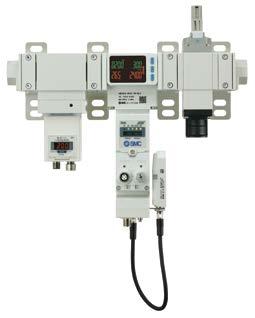
Will you be a loser in the HV motor lottery?
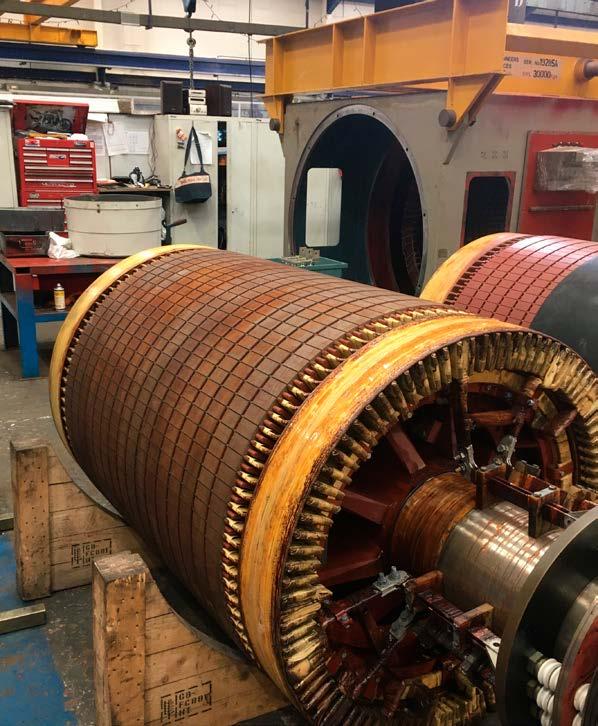 Trevor Hilton Area Sales Manager (Engineering)
Trevor Hilton Area Sales Manager (Engineering)
What are you prepared to gamble on your HV motors’ reliability? The losses incurred through months of downtime if they let you down? The costs of extracting an asset for an unnecessary overhaul? Or would you rather bet on sophisticated testing, comprehensive monitoring, and engineering expertise for your peace of mind? That’s what one construction materials manufacturer did, by putting everything on ERIKS to win.
ERIKS’ unique combination of three key strengths
In a recent competitive tendering process for HV motor maintenance and repair, ERIKS won the business through a unique combination of three key strengths. Not just expertise in maintaining HV motors. Not just unrivalled experience and resources. It was both those, plus Partial Discharge (PD) and Tan Delta testing capabilities [see box-out].
The customer not only gets the reassurance of optimised reliability, through expert maintenance of their high voltage critical assets. They also avoid the expense of extracting a healthy motor simply because it’s on the rota for maintenance. And the potential cost of overlooking a failing motor just because ‘it’s not its turn.’
For such a critical asset – where reliability is crucial – making a wrong call like this could be the difference between cost-savings and catastrophe.
Test-in or takeaway?
An inflexible maintenance schedule is a lottery with the odds stacked against you.
If you have two duty motors and two standbys, and the schedule says Motor 2 is due for testing, it has to be tested. But until it’s extracted and inspected, most motor repairers won’t know if it actually needs work. With four motors that could need attention, the odds don’t look good.
Stack the maintenance lottery odds in your favour
Removing an HV motor for testing is costly. And if the tests reveal it’s in good condition, it’s money lost you can never get back.
So one of the major cost- and time-saving benefits ERIKS offers is the capability for onsite PD and Tan Delta testing. This does more than tip the odds in your favour. It actually guarantees a win.
Firstly, you’ll never remove a reliable motor in good repair simply because it’s scheduled. And secondly, you can identify which motor needs the most urgent attention, before a potential failure turns into downtime.
‘Plan for what’s difficult –while it’s easy’
Chinese army general Sun Tzu wasn’t thinking about HV motors, but he knew the benefits of being prepared.

If you have a planned shutdown scheduled for August, Sun Tzu would tell you to have ERIKS test your motors on-site in April. This will identify any motors which are degrading and need attention, before they let you down. You can prepare while it’s easy for what’s difficult: extracting them. Then when shutdown comes, you can remove them to the workshop for maintenance.
With your standby motors also tested in advance (and overhauled if necessary) you can be sure they will be ready to swap-out when the time comes.
Be a trendsetter
ERIKS’ regular on-site testing of your HV assets stacks the maintenance lottery odds even more in your favour.
Repeating the tests regularly – at least once a year – gives you more than a snapshot of your motors’ condition and reliability. It paints a complete picture. This enables ERIKS’ engineers to set a baseline, identify trends,
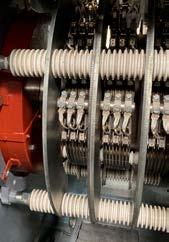
One day’s testing could save 12 weeks’ downtime
and determine any rate of deterioration. Which means you can then focus planned maintenance on the motors which really need it.
Just one day’s on-site testing of your HV motors could save you as much as 12 weeks’ downtime. So why risk losing the motors maintenance lottery? Contact your usual ERIKS representative and win the biggest prize of all: reliability of your motors.
Testing, testing, one, two…
Partial Discharge (PD) testing checks for electrical discharge or spark, which takes place across a void or gap in insulation between two electrodes. Voids occur inevitably in HV windings. PD can accelerate damage to the insulation, which will ultimately cause the windings to fail –usually through a breakdown to earth.
Tan Delta testing indicates leakage of electrical current to ground, which depends on the condition of the machine insulation system. When the insulation has sufficiently decayed and the discharge levels and/or leakage currents are high enough, the winding will fail – also usually through a breakdown to ground. Repeated tests over time enable plotting of Tan Delta curves to identify deterioration of the winding insulation. Find
Navigating the Maze: Overcoming new engineering supply chain challenges
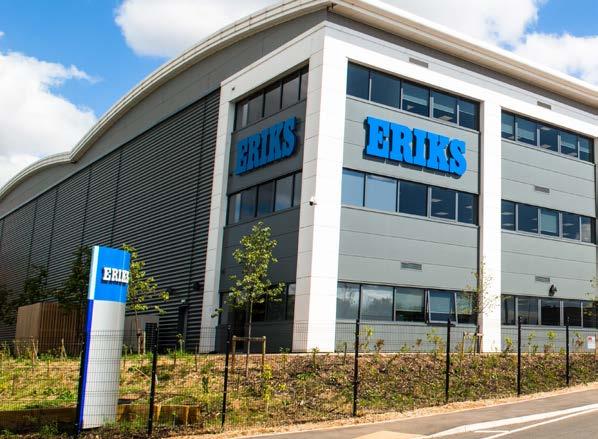 Paul Lynch Chief Commercial Officer, ERIKS UK&I
Paul Lynch Chief Commercial Officer, ERIKS UK&I
In recent times, the engineering and manufacturing landscape has been marred by a myriad of supply chain challenges, posing significant hurdles for businesses across the UK and Ireland.
The confluence of Brexit, the lingering impact of the COVID-19 pandemic, and geopolitical tensions in Ukraine has thrust supply chain resilience to the forefront of boardroom priorities. In this article, Paul Lynch, Chief Commercial Officer at ERIKS delves into the evolving dynamics of the Maintenance, Repair, and Operations (MRO) products supply chain, shedding light on the ‘new normal’ and proffering insights for the future.
Safeguard against anticipated shortages
The initial response to the upheavals brought about by Brexit and the pandemic was a shift from the long-standing ‘Just In Time’ philosophy to a more cautious ‘Just In Case’ approach. Manufacturers, diverging from established practices, began stockpiling goods beyond immediate needs to safeguard against anticipated shortages.
Recent data from The Manufacturers Health Check Report 2022 paints a vivid picture, revealing a staggering 99.7% surge in stock
levels for UK manufacturers, soaring from an average of £365,736 in Q3 2019 to £730,681 in Q3 2022.
Amid this turbulence, have been discussions regarding the merits and drawbacks of various supply chain models, including nearshoring, far shoring, offshoring, and reshoring. Simultaneously, the seismic shift in consumer expectations, spurred by the Amazon-type experience, has permeated the business-to-business realm.
ERIKS, aware of the challenges presented by COVID, leveraged the opportunity to construct the £22 million Fulfilment Centre of Expertise (FCE) in Oldbury, emphasizing scale and digital automation capability.
Vast inventory
The advantages of Central Stocking versus Local Stocking are paramount in the evolving landscape. ERIKS’ FCE in Oldbury boasts a vast inventory of 50,000 items available for dispatch within an hour and over 250,000 products on next-day delivery.
This centralized approach not only ensures a broader product range but also facilitates faster turnover, guaranteeing ‘factory fresh’ stock. Same-day delivery and sustainable packaging further enhance the appeal of the centralized model, especially with the shift in behaviour during the pandemic, as evidenced by a permanent decline in branch visits in favour of remote communication channels. However, the transition to a central supply model faced resistance, from many sides, rooted in the perceived comfort of local stocks. Engineers, accustomed to the tangible presence of nearby ‘trade counters,’ were initially reluctant to abandon this familiar landscape, despite its inefficiencies when scrutinized.
The evolving paradigm has seen manufacturers reevaluate their strategies, keeping critical items on the shelf for swift operational recovery. Yet, this approach introduces the challenge of supply chain insight, a longstanding issue for OEMs and manufacturers.

ERIKS’ White Paper, Is the manufacturing supply chain broken? highlights the struggle for visibility beyond Tier 1 suppliers, emphasizing the need for supply chain experts to collaborate with manufacturers in building resilience.
A survey by ERIKS revealed the delicate balance required in managing stocks, with companies oscillating between excessive inventories and lean practices, where production engineers double as the purchasing department.
Robust supply chain risk management strategies
In response, companies adopting robust supply chain risk management strategies are better equipped to navigate sudden shifts in demand or operating conditions.
Recognising the limitations of OEMs and manufacturers in understanding the intricate supply chain, the onus is increasingly placed on supply chain experts like ERIKS.

Anticipating and planning for potential disruptions, ERIKS has developed a flexible business model, incorporating multiple sourcing agreements globally and buffer stocks for critical components.
Post-pandemic, a growing trend has emerged among large OEMs and manufacturers opting to outsource their MRO supply chain challenges entirely through an OnSite solution. Similar to disruptive models like Spotify and Uber, the As-A-Service approach to supply chain management offers a modern solution, addressing the complexities of the current landscape.
The challenges confronting OEMs and manufacturers in the MRO supply chain are formidable and often beyond their control. The prevalent response of overstocking, while providing a temporary buffer, introduces capital inefficiencies and risks associated with product obsolescence.
The solution lies in relinquishing the ‘comfort blanket’ of local trade counters, embracing digital replenishment, and gaining profound
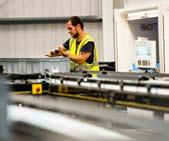
insight into MRO/engineering stores. Alternatively, the As-A-Service approach enables businesses to entrust supply chain complexities to experts, allowing them to focus on production.
As the engineering supply chain navigates these new challenges, adaptability and collaboration emerge as key drivers for resilience and success.
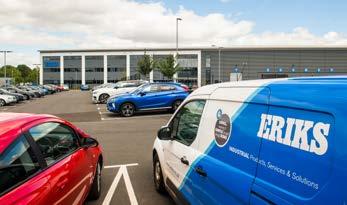
A match for your explosive environments

If your operations include processes in potentially explosive atmospheres, you’ll know the risks and the right precautions to take. But some hazards can be more easily overlooked than others.
Tested and certified to be as safe as possible
Combustible gases, vapours and dust are key ingredients for potential explosions. When you know they’re present, obviously you will take steps such as using specialised ATEXcertified equipment and products. Only these will keep you compliant with international standards, and ensure the safety of your staff, plant and the environment.
However, if there’s been an emergency repair, for example, or a temporary replacement has been installed, there may be non-ATEX-certified products hiding in plain sight in your facility. Motors and hoses, we’re looking at you…
Twice as safe
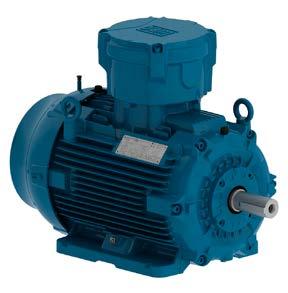
Motors generate heat, have moving parts, and contain potentially combustible materials. That’s why they’re a serious explosion risk in chemical plants, grain processing facilities, oil refineries and similar environments where explosive atmospheres might be present. But as crucial components for driving many processes, industry literally can’t operate without them.
The only option is to choose motors for hazardous environments which are tested and certified to be as safe as possible.
ATEX-certified motors greatly reduce the risk of adverse events in hazardous environments. “Explosion-proof” or “flameproof” motors in particular have specially designed “flame paths” that cause internal sparks or explosions to dissipate before reaching the external environment.
ATEX motors will usually have increased IP ratings and sealing arrangements to prevent the ingress of potentially hazardous material.
Even so, it’s still important to choose the correct ATEX motor, specifically classified for its operating environment: for example, whether the atmosphere contains gas, dust, or if explosive materials are likely to be present.
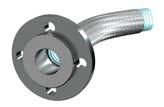
Some hazards can be overlooked
ATEX A to B
Many processes such as fuel transfer and chemical transportation; require getting liquids and gases from A to B. This is a risk if the liquids or gases are flammable, and/or being transported through external explosive atmospheres. Therefore, the hoses carrying them have to be capable of handling the substances without being affected by them, and must also be resistant to the environment they pass through.
Just like motors, hoses can be ATEX-certified to prove they are resistant to ignition and won’t become a source of ignition themselves. ATEX-certified hoses are also made from materials that are resistant to any chemicals they might be required to carry. In addition, they have antistatic properties to prevent the build-up of static electricity, which can be a potential source of ignition.
ATEX by numbers
There are two key ATEX regulations, which apply to gas, vapour and dust explosions.
The ATEX 114 (2014/34 EU) directive specifies requirements for equipment and protective systems designed for areas prone to explosions. It relates solely to product design and manufacture, so is targeted specifically at equipment and systems manufacturers.
ATEX 153 (1999/92/EC), on the other hand, covers the safe use of equipment and protective systems in explosive environments. It sets minimum safety standards for the workplace and the equipment, to ensure the safety of employees in such hazardous areas.
To help keep your employees safe and your operations compliant, you not only need to look for motors and hoses which meet the requirements of ATEX 114 and 153, but you also need to understand three other key considerations:
Zone Classification: Equipment should be rated for the zone it will operate in e.g. Zone 0, 1, 2 for gases and Zone 20, 21, 22 for dust.
Material Compatibility: Equipment materials should be compatible with the substances they will be exposed to. This includes chemical- and temperatureresistance.
Maintenance and Inspection: Regular checks and maintenance are essential to ensure that ATEX-certified equipment remains in safe working order. Wear and tear or damage can compromise safety.
Ensure the safety of your staff, plant and environment
Safer working starts here
ERIKS’ wide selection of ATEX-certified products is especially suitable for gas- and explosion- hazardous environments. It ranges from motors to valve switchboxes, plastic hoses to wear-resistant rubber hoses, and even includes spark-free tools for maintenance and repair work.
By choosing the right hoses and motors, and working with the right equipment, you can protect employees, ensure compliance, and reduce risk to the minimum at all times.
What does ATEX mean?

ATEX is an abbreviation for ‘ATmosphères EXplosibles’, which is a set of European Union regulations devised to ensure the safety of products used in potentially explosive atmospheres. ATEX-certified products have undergone rigorous testing to confirm they won’t ignite explosive materials.
Sticking together for sustainability
No-one ever said manufacturing is simple, though in principle it’s straightforward. Make things safely and efficiently, without incurring excess costs, and make them reliable so your customers are happy. But now there’s another factor in the manufacturing Best Practice equation: sustainability. Keeping all these balls in the air demands more than one pair of hands. That’s why LOCTITE® relies on ERIKS and our customers rely on us both.
LOCTITE solutions combine reliability and sustainability
By working together, LOCTITE® and ERIKS are able to deliver the most appropriate, most sustainable solutions for customers, in the most efficient and cost-effective way.
Everything LOCTITE® does is underpinned by the three pillars defined by Henkel (our parent company) in their global Sustainability Ambition 2030:
Lead by example (optimising our own carbon footprint in operations, and sourcing low emission raw material)
Lead through technology (create a positive impact with a diverse product portfolio)
Transparency (be open about what we are doing, and why)
To make our sustainability efforts effective we are focussing on four key areas: climate, circularity, safety and nature.
Specifically, that means:
Climate : Enabling emission reduction in customers’ production processes, and in the product use phase. Enabling lower Scope 3 emissions for customers by using lowemission raw materials.
Circularity : Using circular raw materials. Keeping valuable materials in the loop by contributing to reuse, repair, and recycling of products and their components.
Safety : Advancing chemical safety of solutions. Facilitating safety of end products in the use phase, and in customer’s production processes.
Nature : Enabling preservation and protection of environmental resources such as water.
Independent evidence of our commitment is our platinum score with Ecovadis – the industry’s most renowned rating system for assessing sustainability performance. Adherence to Ecovadis is audited annually by external stakeholders, so it demonstrates our continuing progress in environmentally and socially responsible business practices.


Committed to removing potentially harmful materials
Leading through technology
For our customers, the most tangible proof of sustainability in practice is how we lead through technology. The products below, all available from our partner ERIKS, are powerful examples of LOCTITE solutions which combine reliability and sustainability.
LOCTITE Threadlockers
By preventing the loosening of nuts and bolts, Threadlockers make machinery safer and extend its useful life – making them inherently sustainable. In certain applications they can also reduce or eliminate the consumption of resources. For example, loose bolts which cause vibration can lead to reduced efficiency, increased energy use, and machinery breakdown. All these outcomes


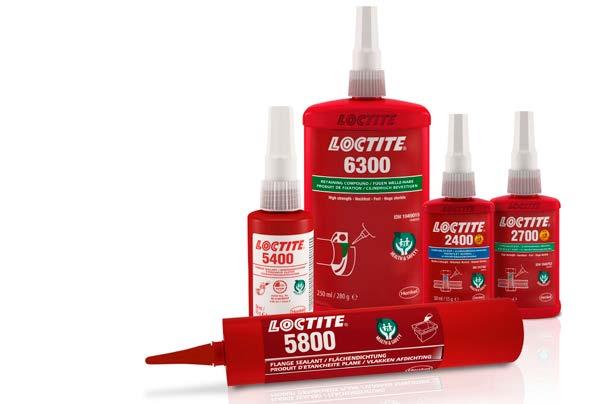
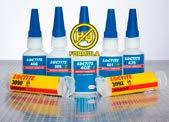
create an unwanted and unnecessary carbon footprint through increased maintenance, re-work and spares requirement, yet can be prevented with Threadlockers.
LOCTITE Instant Adhesives
As part of sustainable product development, LOCTITE is committed to removing potentially harmful materials. That’s why LOCTITE Instant Adhesives are now free from Hydroquinone.
Although present in only very small amounts in the original formulations, LOCTITE’s leadership in sustainability led to the chemical’s swift removal in response to
changing regulatory requirements and industry demand. A novel stabiliser package has enabled six of the most widely used products in the LOCTITE Instant Adhesive range to become Hydroquinone-free. More product reformulations are planned for the near future.
Offering tangible improvements in sustainability
LOCTITE Health & Safety Products
Achieving the highest health and safety standards is made easier with LOCTITE H&S products – including LOCTITE 2400 & 2700. These use patented technology formulated to eliminate hazardous substances. Classified as non-hazardous, they don’t need to carry hazard warnings under CLP regulations, and don’t trigger a COSH assessment. Meanwhile, fast cure speeds and impressive strength save time and effort on manufacturing as well as on compliance.
The sustainable solution, every time To help customers understand the environmental impact of the products they choose, LOCTITE classifies them in one of the following categories:
Pioneer: offering tangible improvements in sustainability compared to average or standard market solutions
Contributor: delivering a positive sustainability contribution, though not necessarily better than other available products
Straight performer: contains no harmful substances
Challenged: may contain substances harmful for health and safety
Naturally, through our partnership with ERIKS, where possible we always recommend solutions in the Pioneer and Contributor categories. So when you speak to your usual ERIKS representative, you can be sure to find LOCTITE products which not only provide the best adhesion for the job, but also help your own sustainability efforts.
Will grid deficiency obstruct electric vehicle adoption?

There was widespread reporting in the media about Rishi Sunak’s decision to roll back on the blanket ban on the manufacturing of petrol cars from 2030 to 2035 and to soften several other net zero commitments. However, is it pragmatism about the technical capability of the UK to make the transition to electric vehicles or political vote-chasing which is driving his decisions?
The shift towards electric vehicles is, at its heart, a commendable venture with numerous environmental and economic benefits. Reduced greenhouse gas emissions, lower maintenance costs, and decreased reliance on fossil fuels are just a few of the advantages. However, this transition poses an unprecedented challenge to the UK’s electrical grid, which was designed for a predominantly fossil fuel-based transportation system.
One of the main concerns voiced by critics of the move towards electrification is the grid’s ability to handle the heightened demand brought about by EVs. Without substantial upgrades and modernization, the grid’s capacity will, in its current state, fall short. The potential for rolling blackouts is a legitimate concern. Such disruptions not only inconvenience individuals but also have farreaching economic implications. Businesses,
hospitals, and essential services that rely on a stable power supply could face significant challenges.
However, it’s essential to emphasize that these concerns are not insurmountable. The UK has a history of adapting and evolving its infrastructure to meet changing needs. Investment in the electrical grid, combined with technological innovations, can help us avoid the nightmare scenario of rolling blackouts.
Despite the atmosphere of panic building around this, the industry at large remains confident in their ability to support this transition, “The engineering community is poised and ready to deliver this transformation, but we need government to provide clarity and certainty that we can work towards.” says Christopher Knibb, Director of Policy at the IET.
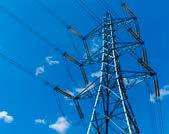
Furthermore, encouraging off-peak charging and the development of residential solar panels and home battery systems can help alleviate some of the grid’s stress. These initiatives can distribute the load more evenly throughout the day and reduce the reliance on the grid during peak hours.
In conclusion, while the strain on the UK’s electrical grid is a genuine concern, it should not deter us from embracing a cleaner and more sustainable future. With the right investments, technological advancements, and a commitment to smart energy management, the UK can successfully power the electric vehicle revolution without facing blackouts.
Repair, Replace, Upgrade
Motors | Gearboxes | Pumps | Valves
Fully equipped workshops, including in-house machining for reverse engineering
Experienced electrical and mechanical engineers
Unbiased repair/replace or upgrade technical advice
Detailed photographic inspection reporting
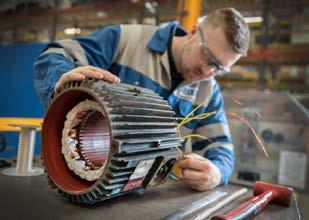
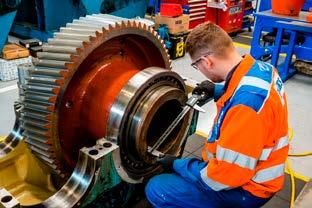
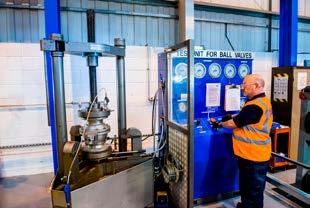
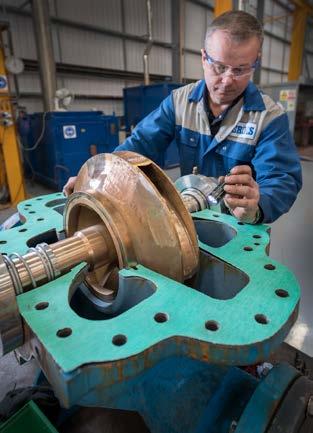
Fenner® - the language of power transmission

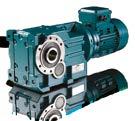



Do you speak Fenner®?
One universally understood language has been passed down through generations of professional engineers without the help of textbooks, dictionaries, or online translation tools. When time-served engineers talk about the benefits of products like Taper Lock® or Fenaflex™, they are speaking Fenner®, the language of power transmission.
The Fenner® brand set the benchmark for engineering excellence more than 150 years ago and continues to deliver the same superior quality and performance today.
Shouldn’t you be speaking Fenner®?


